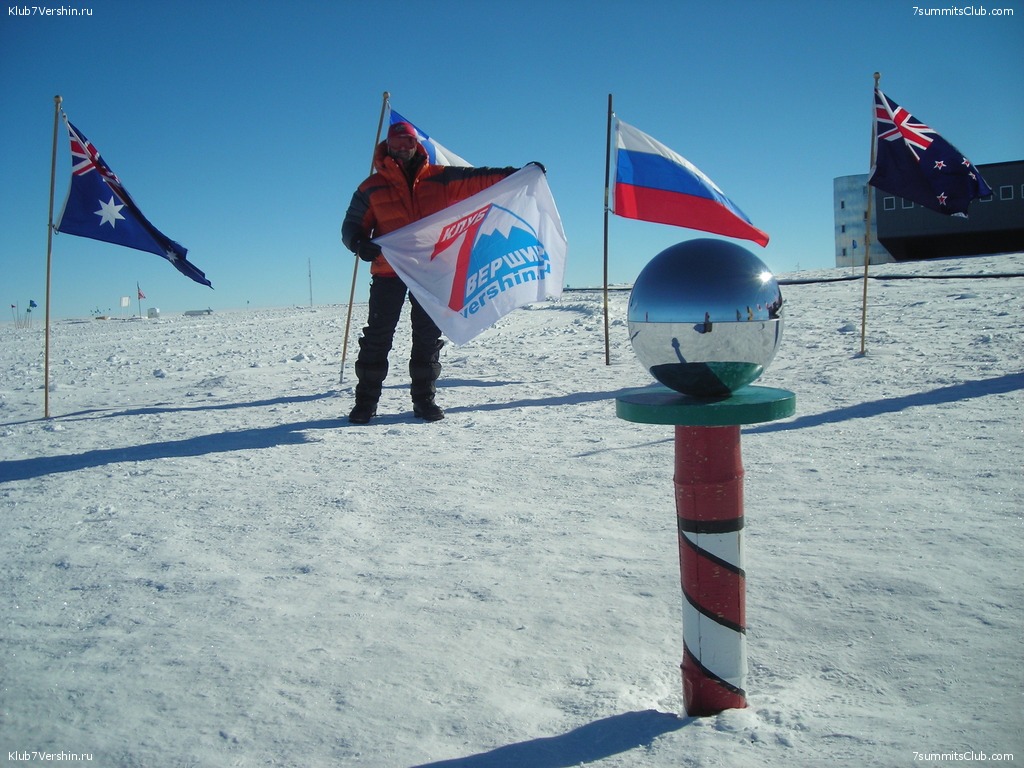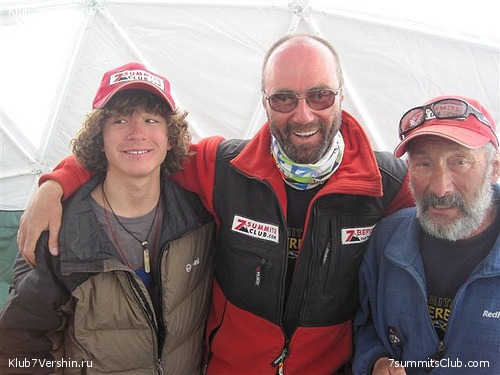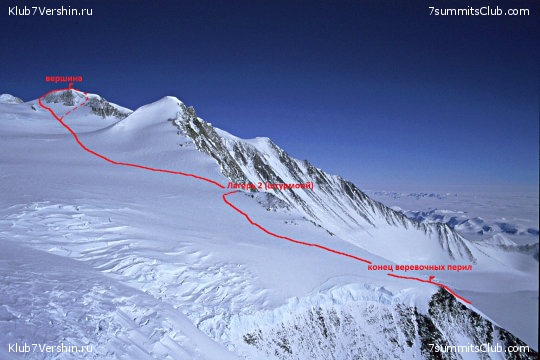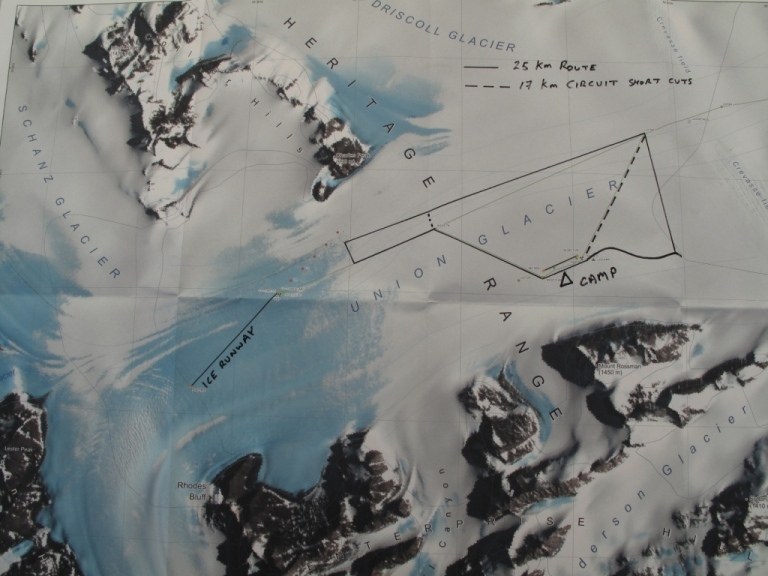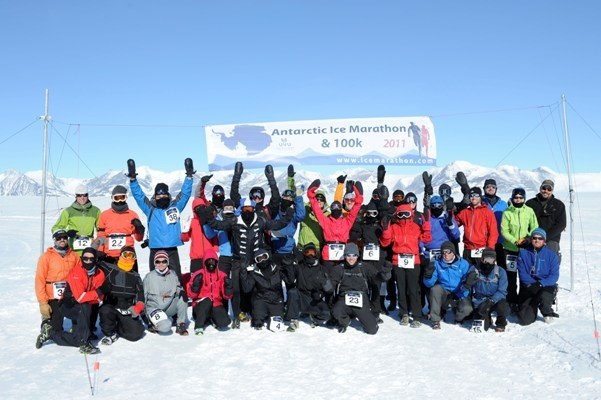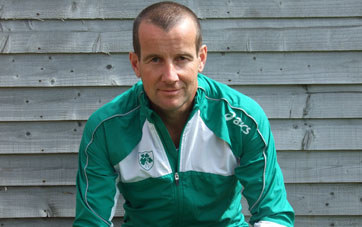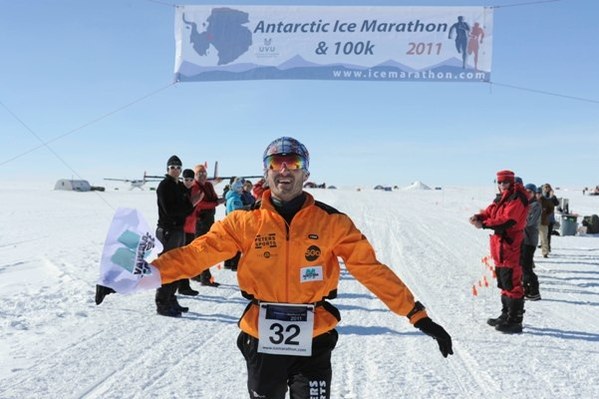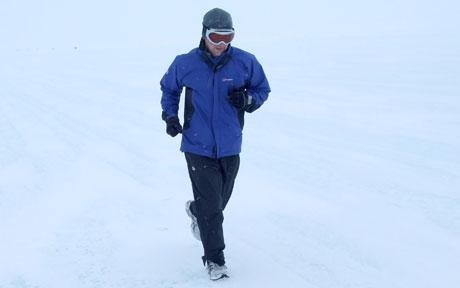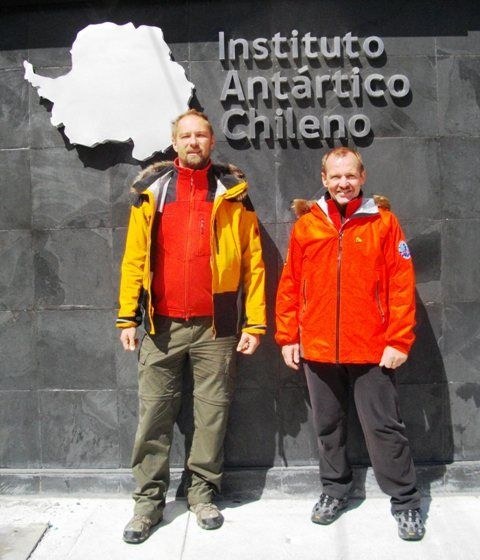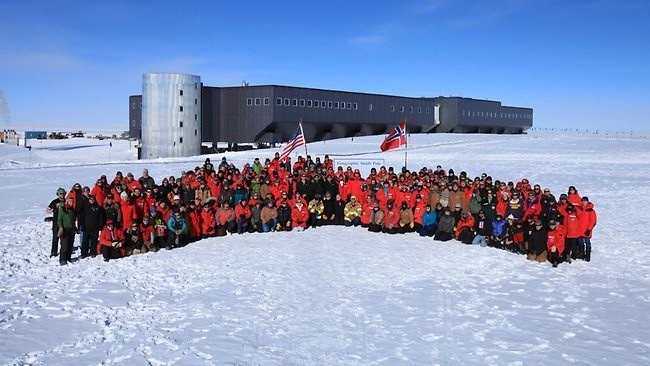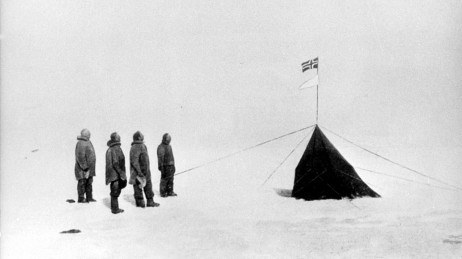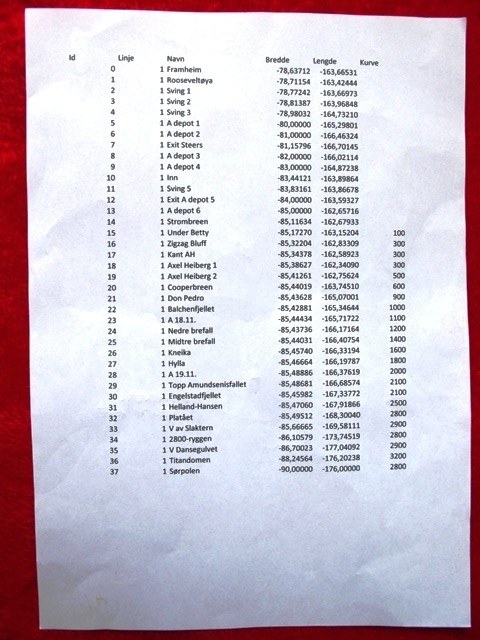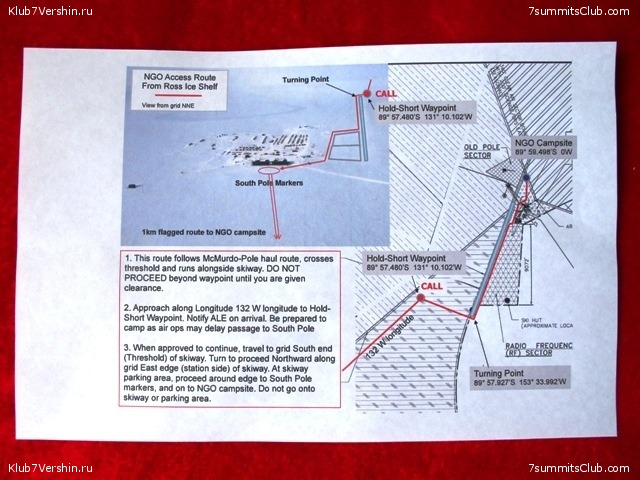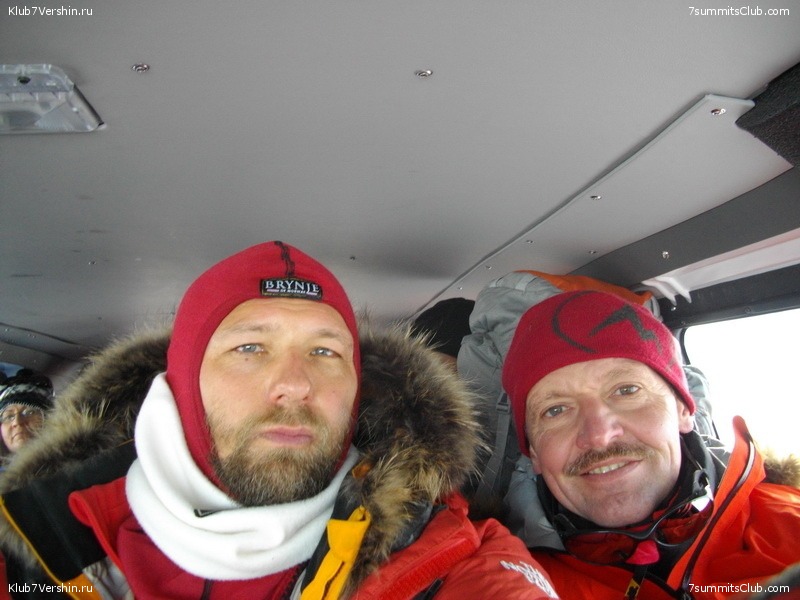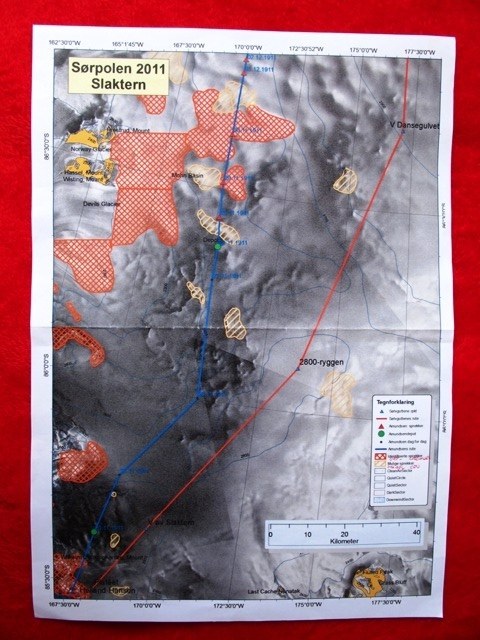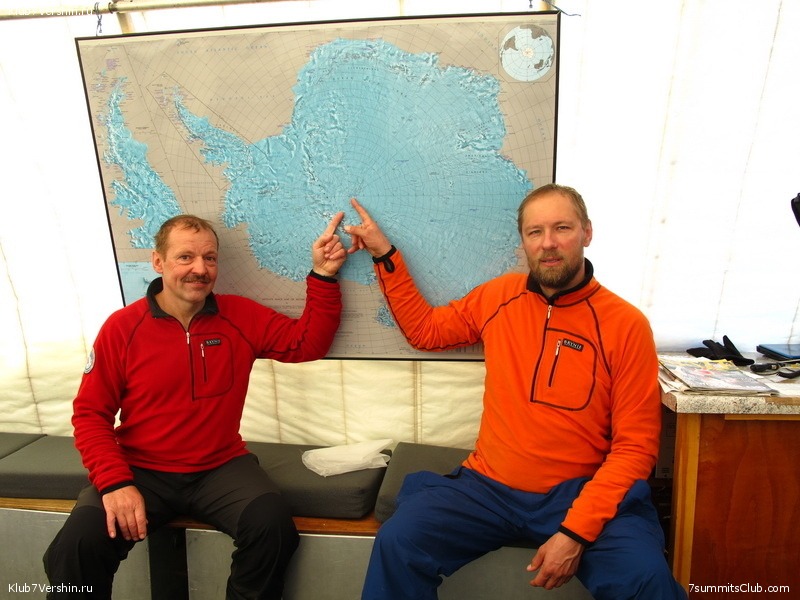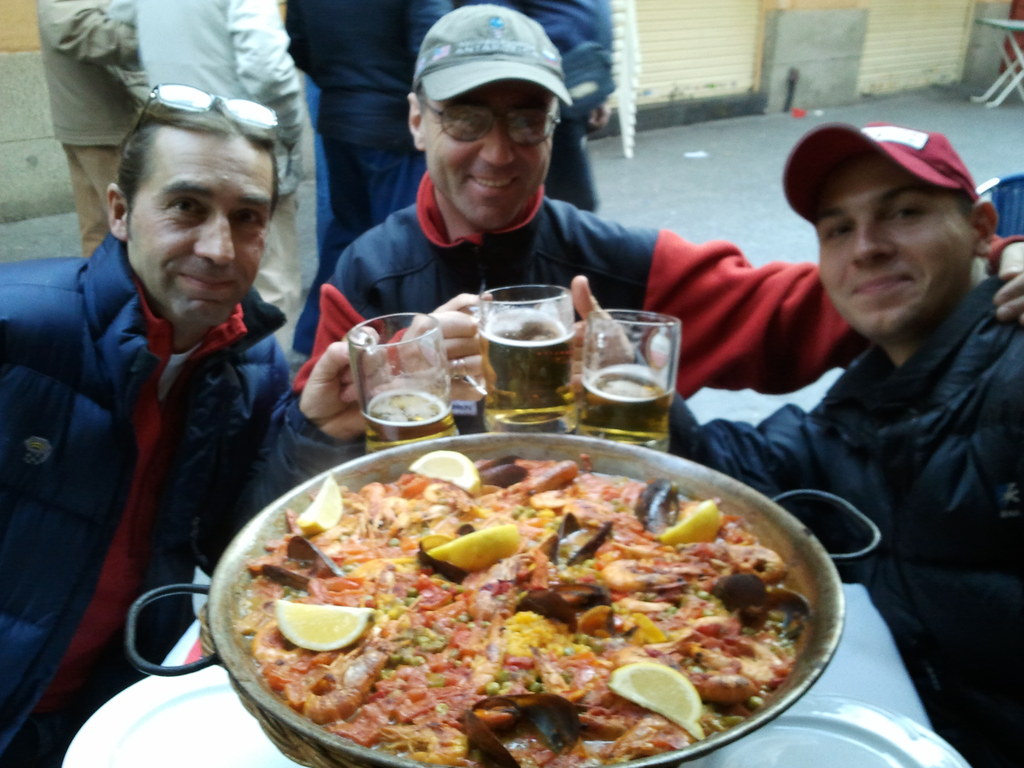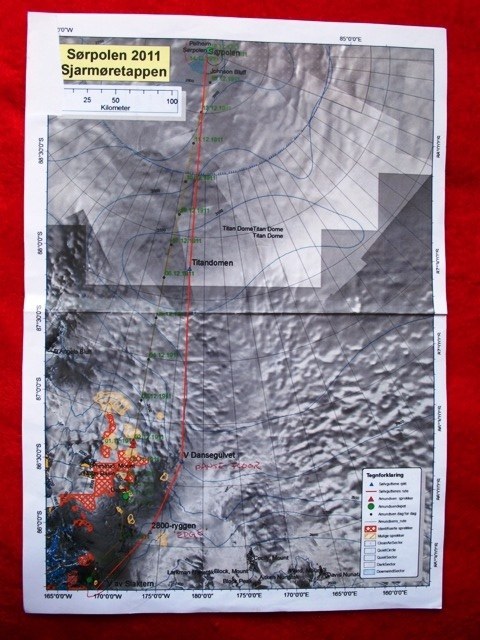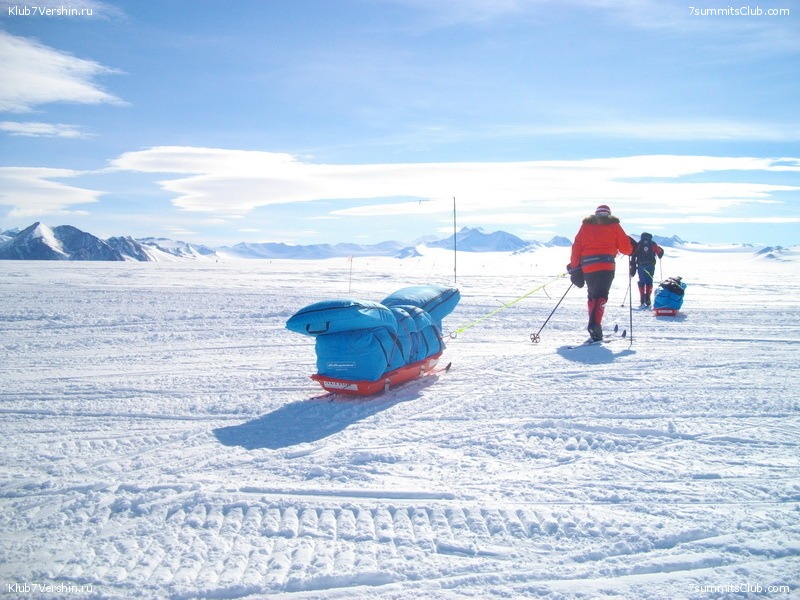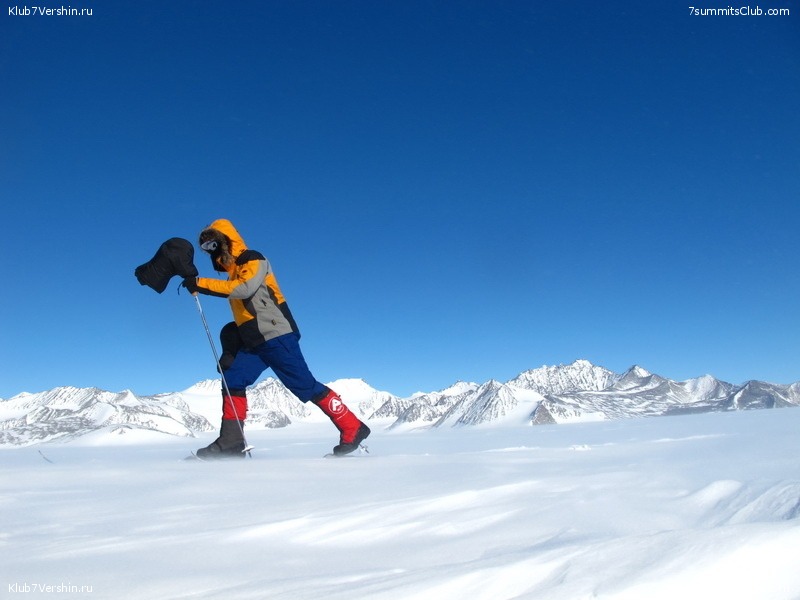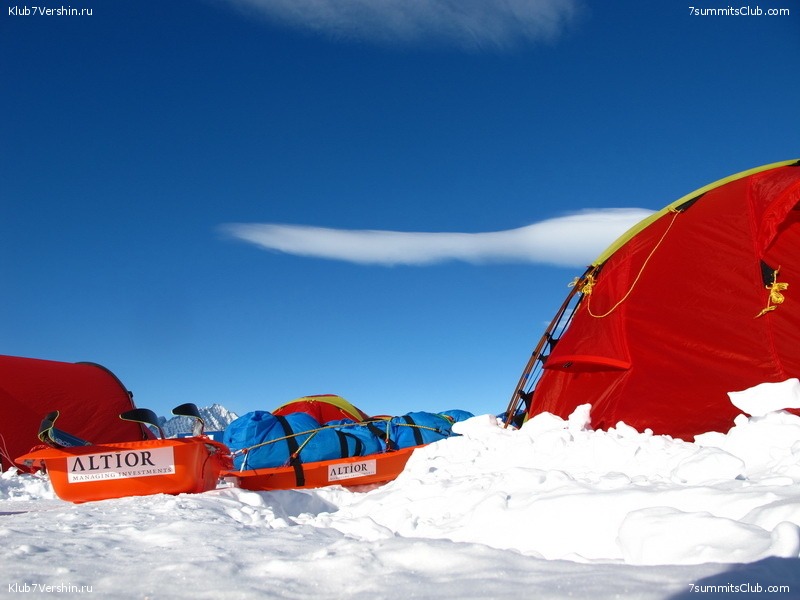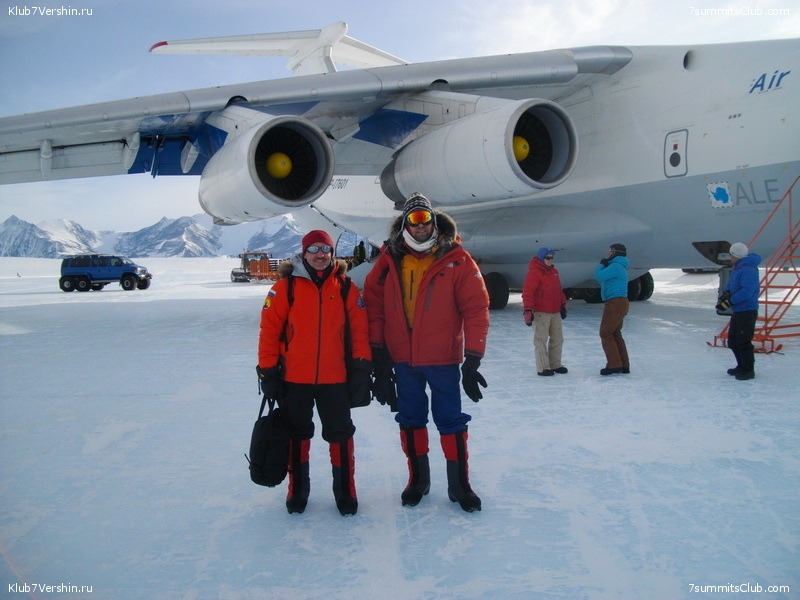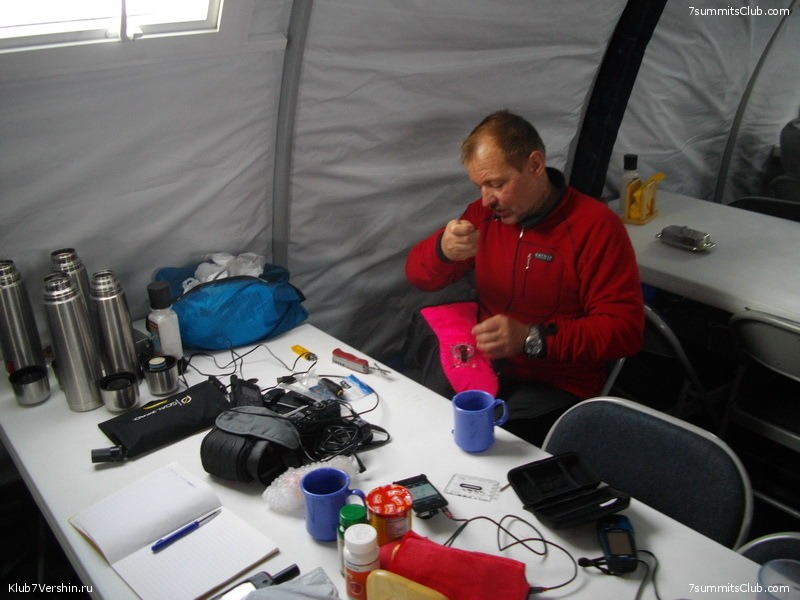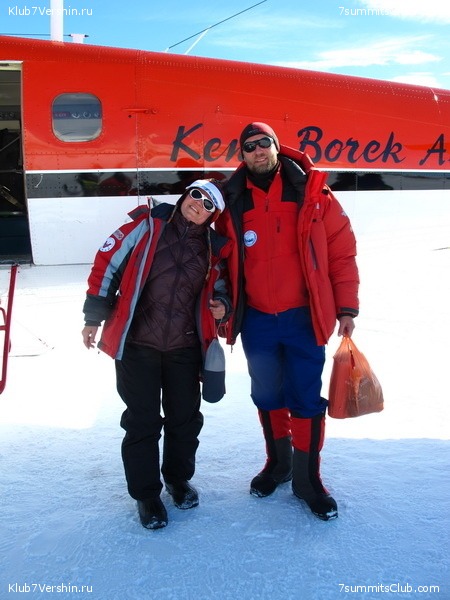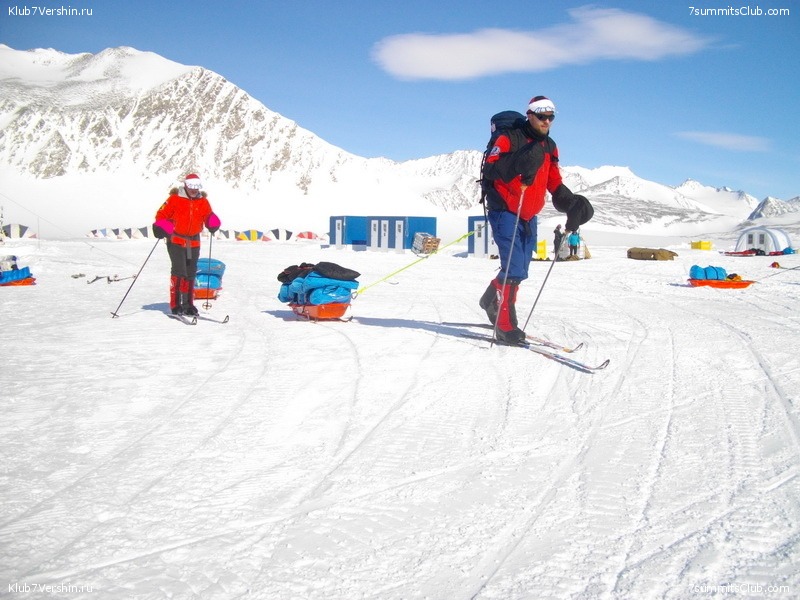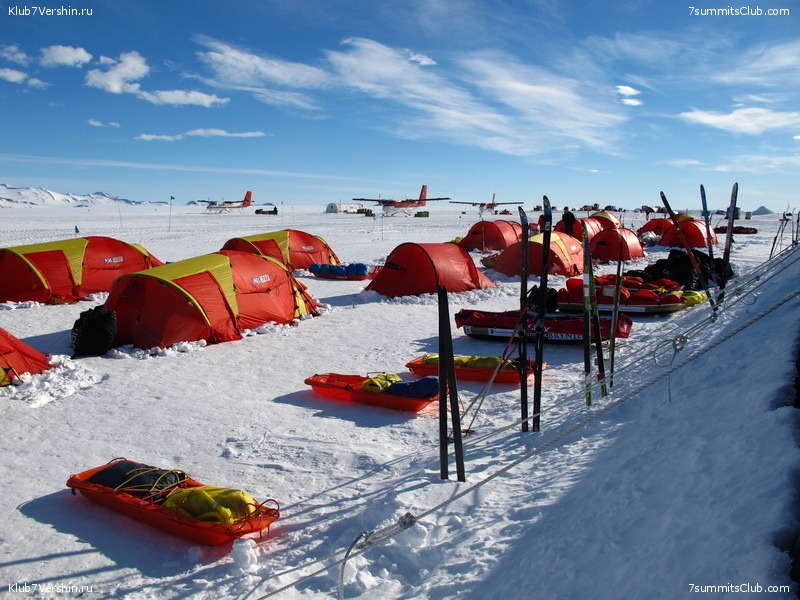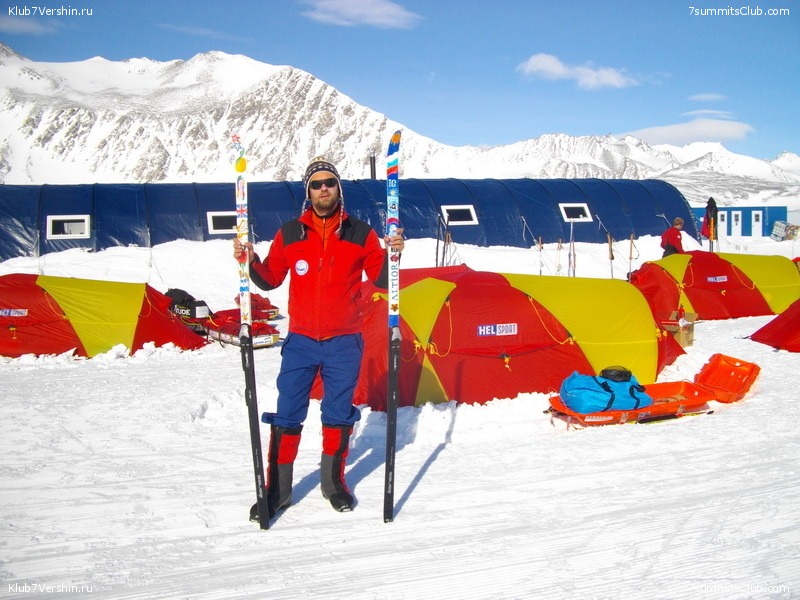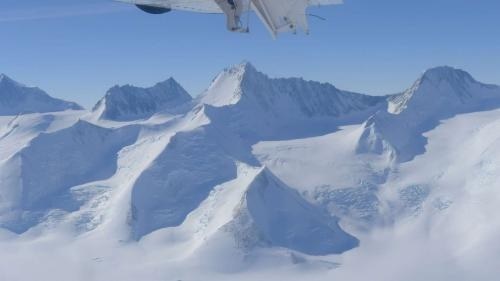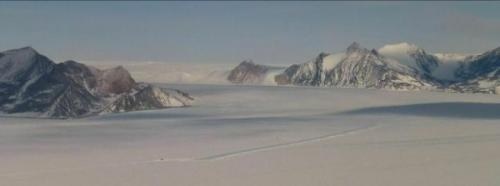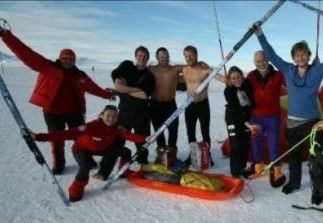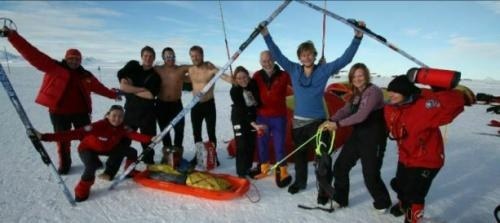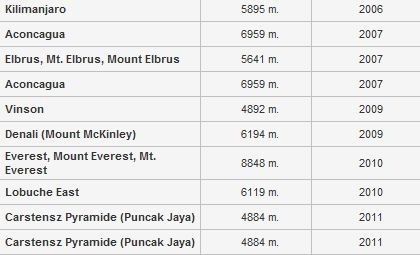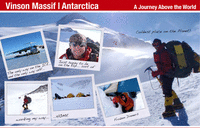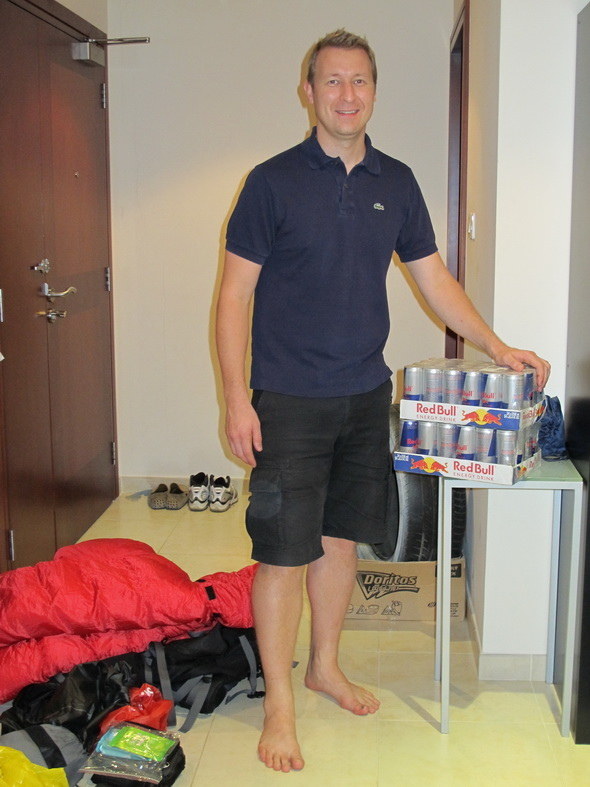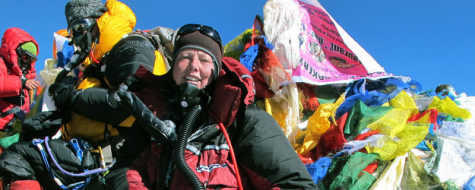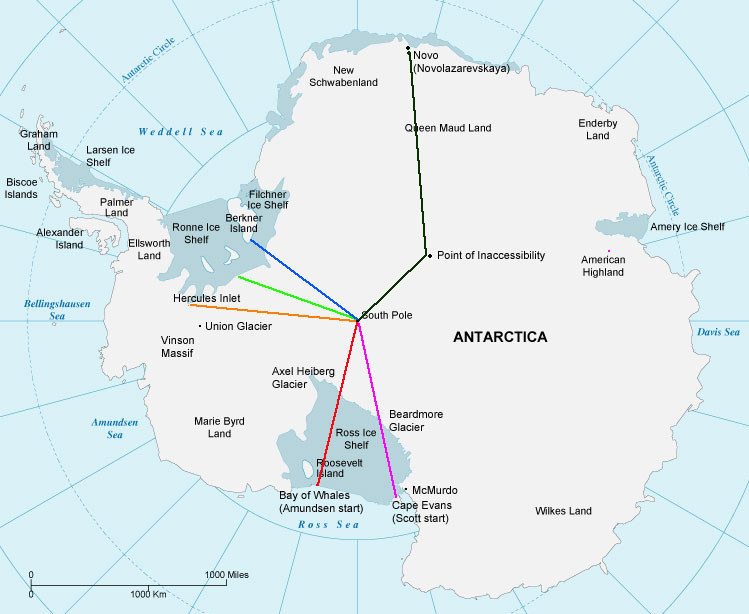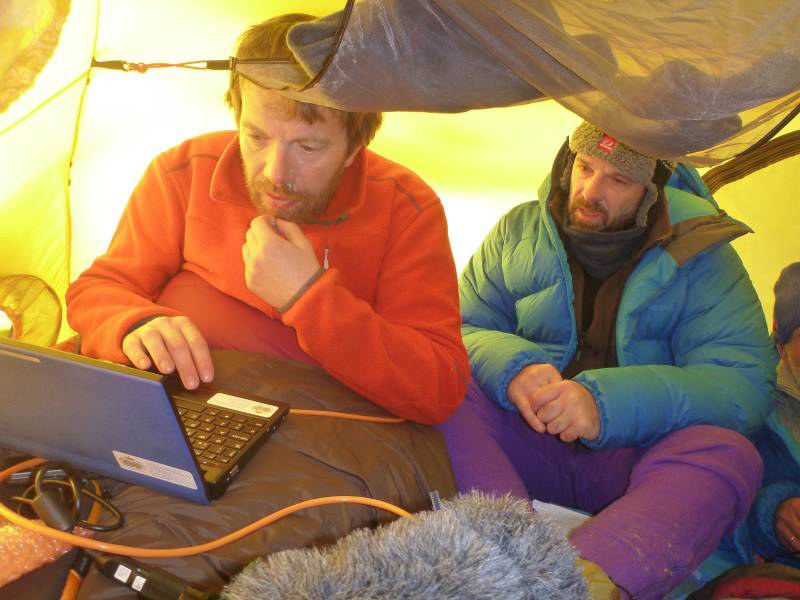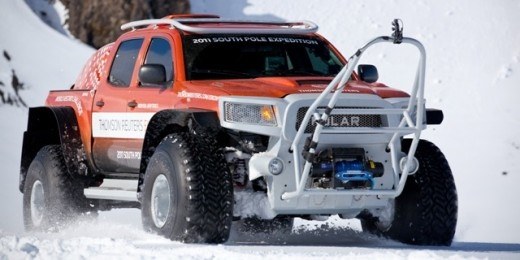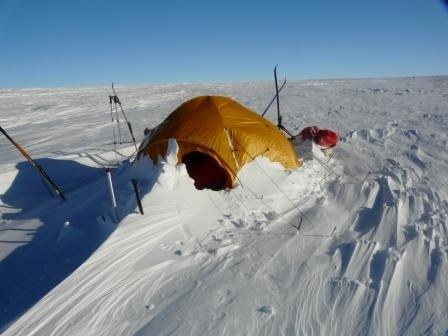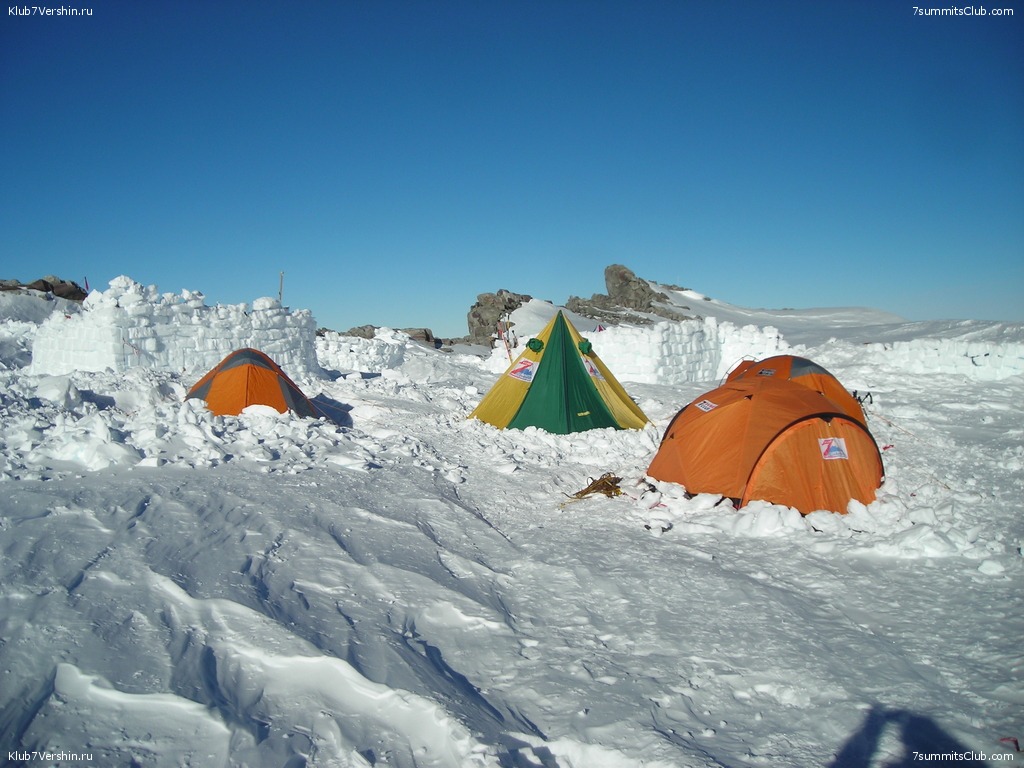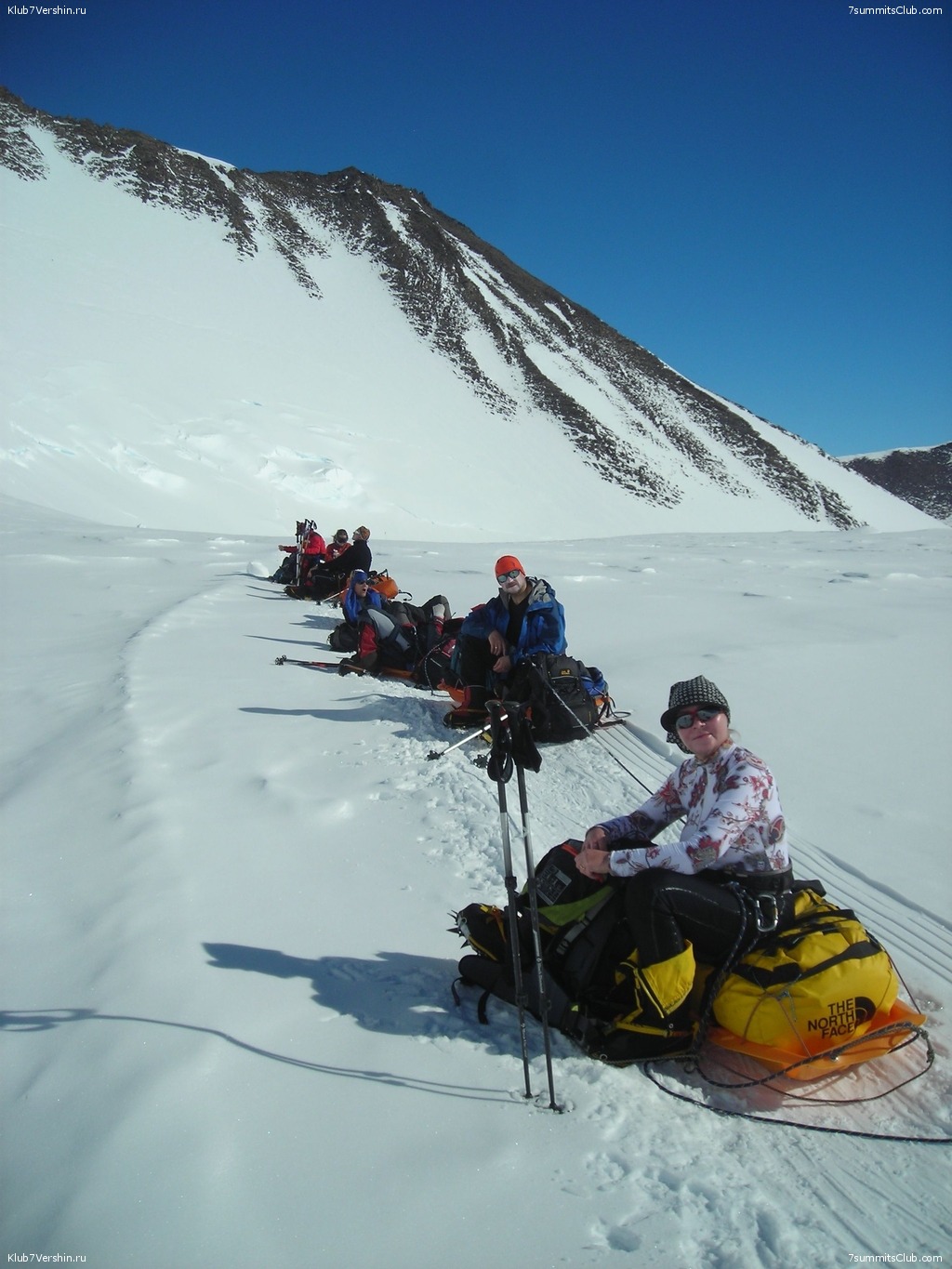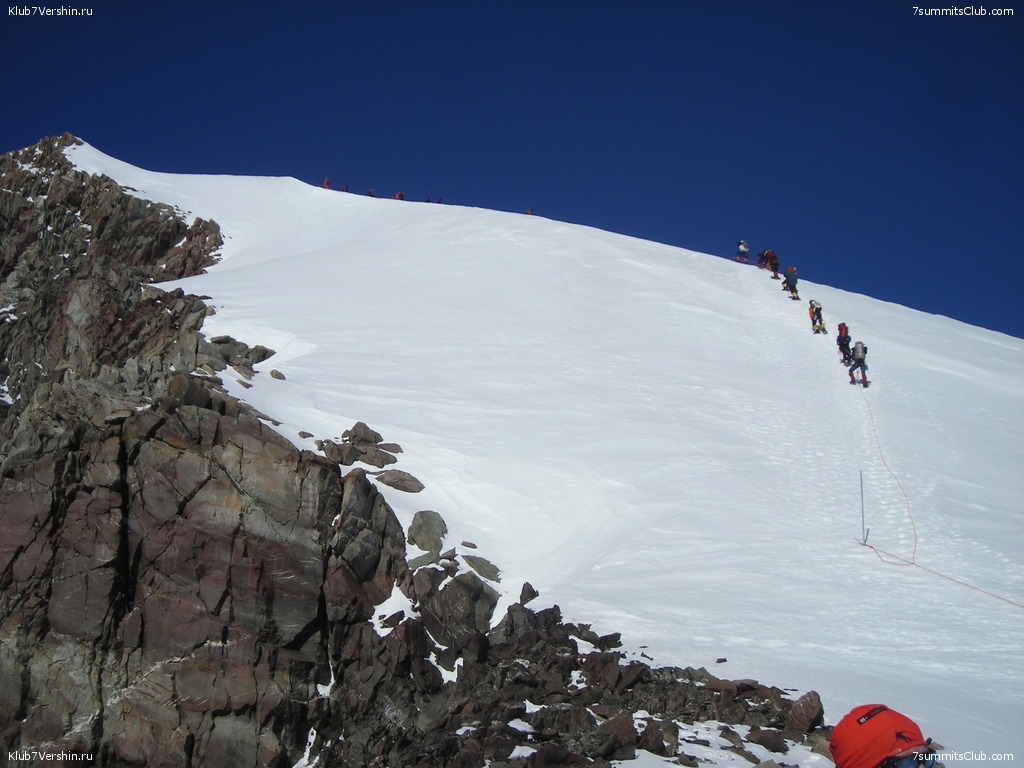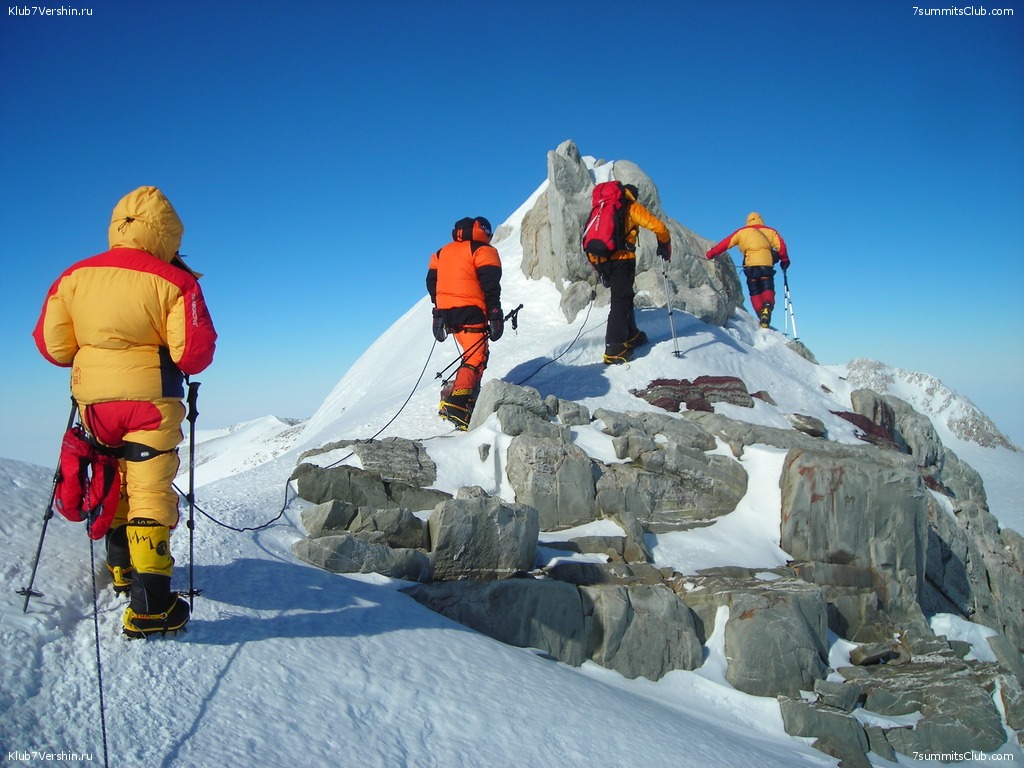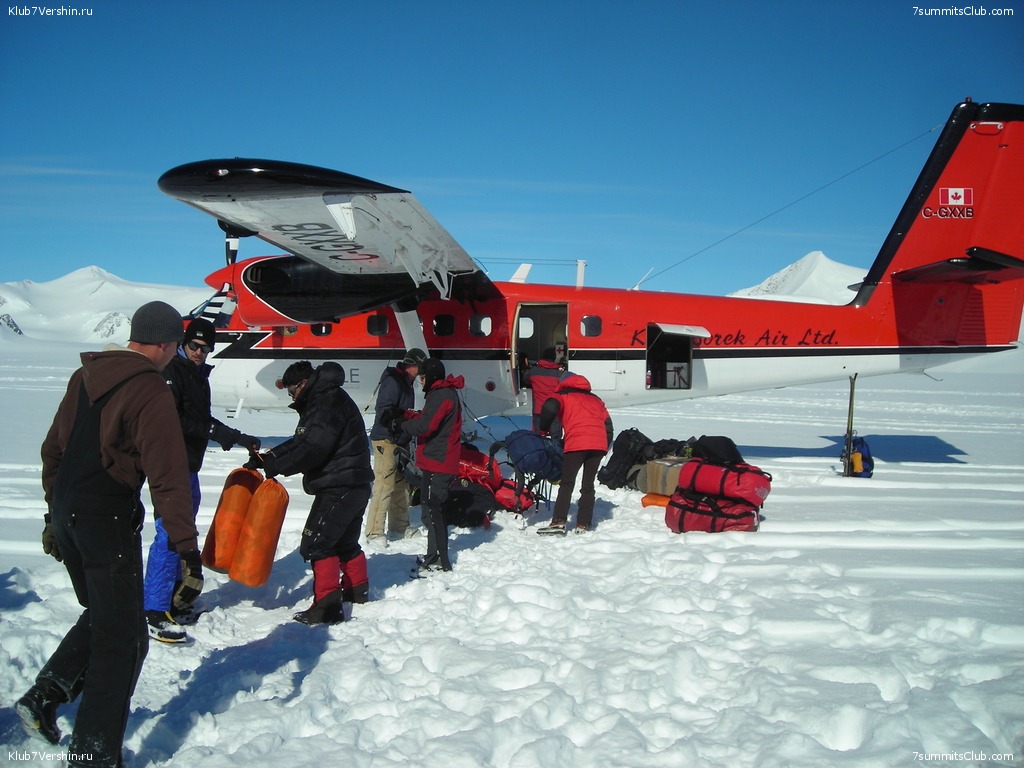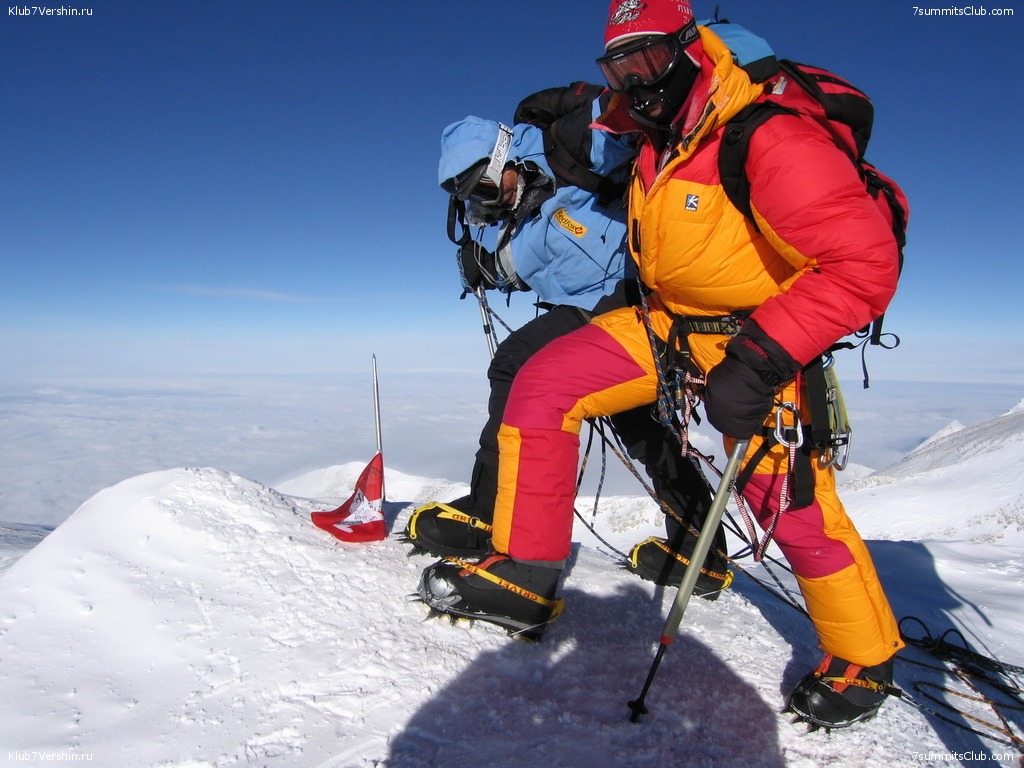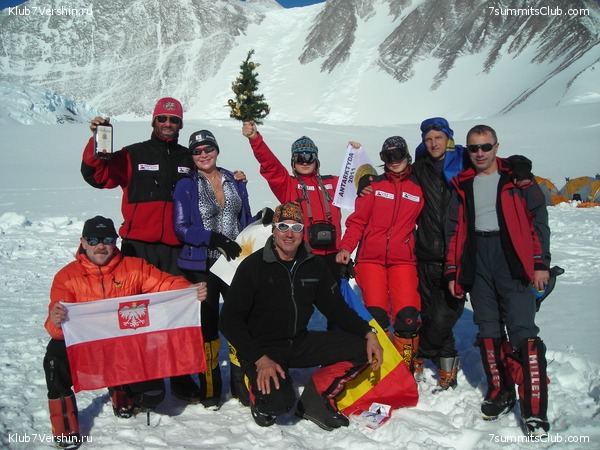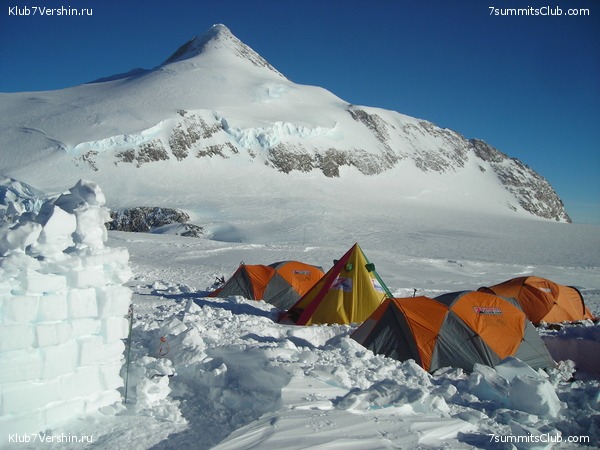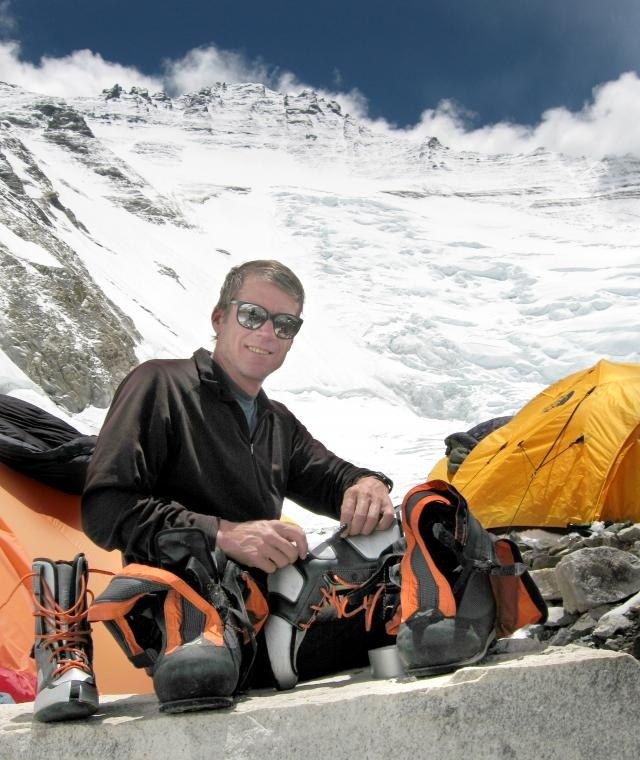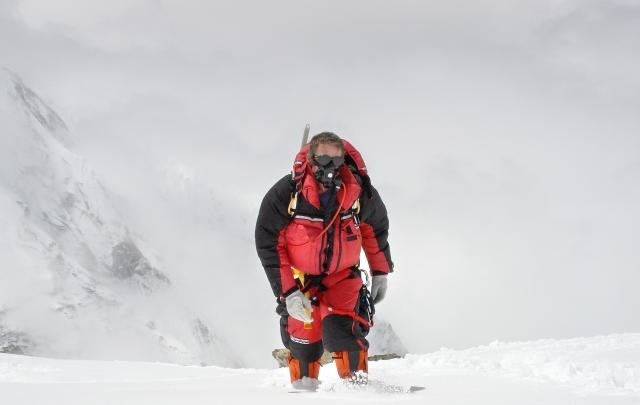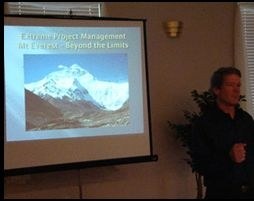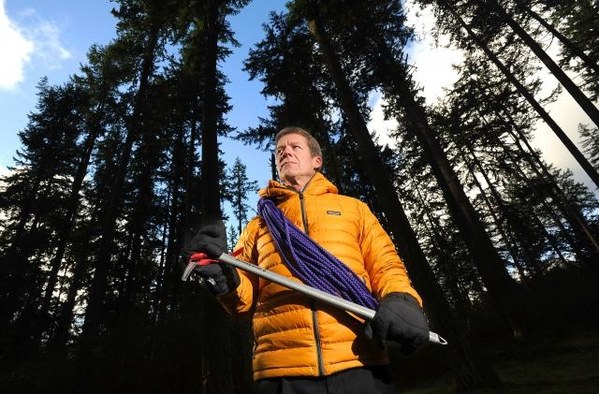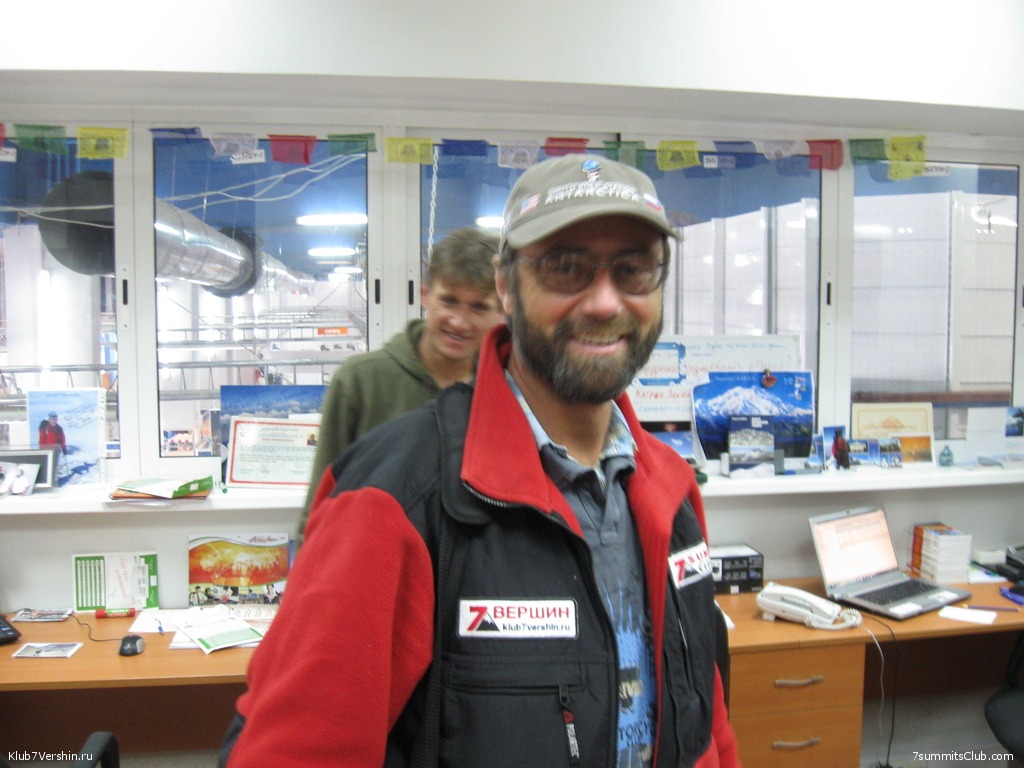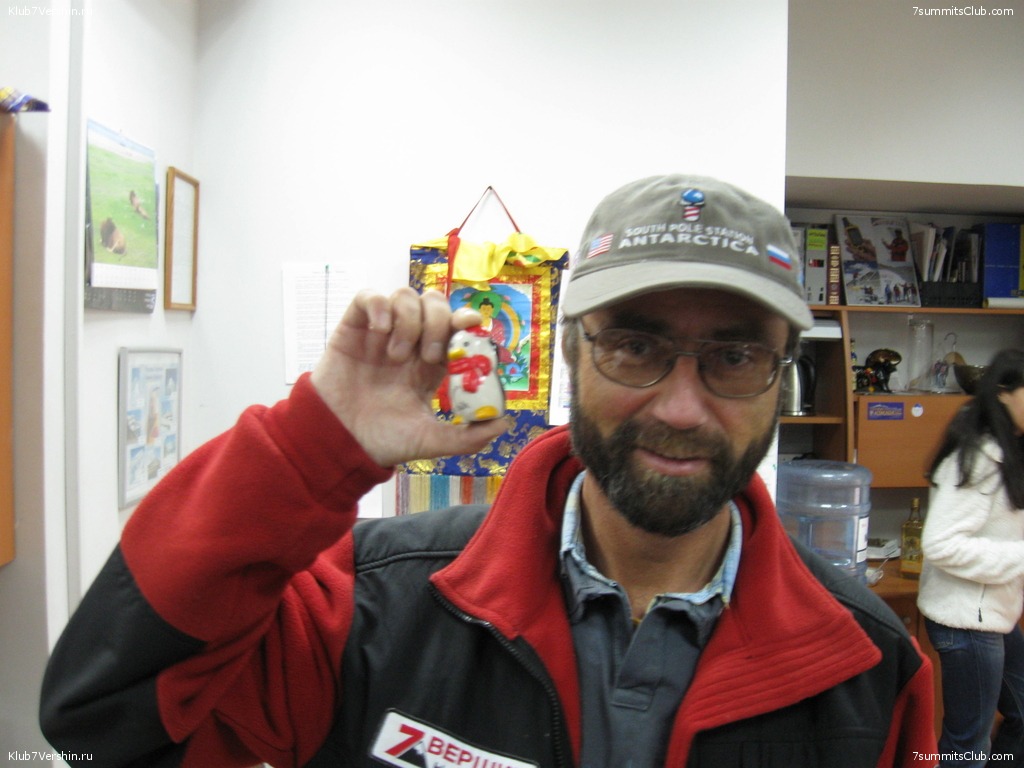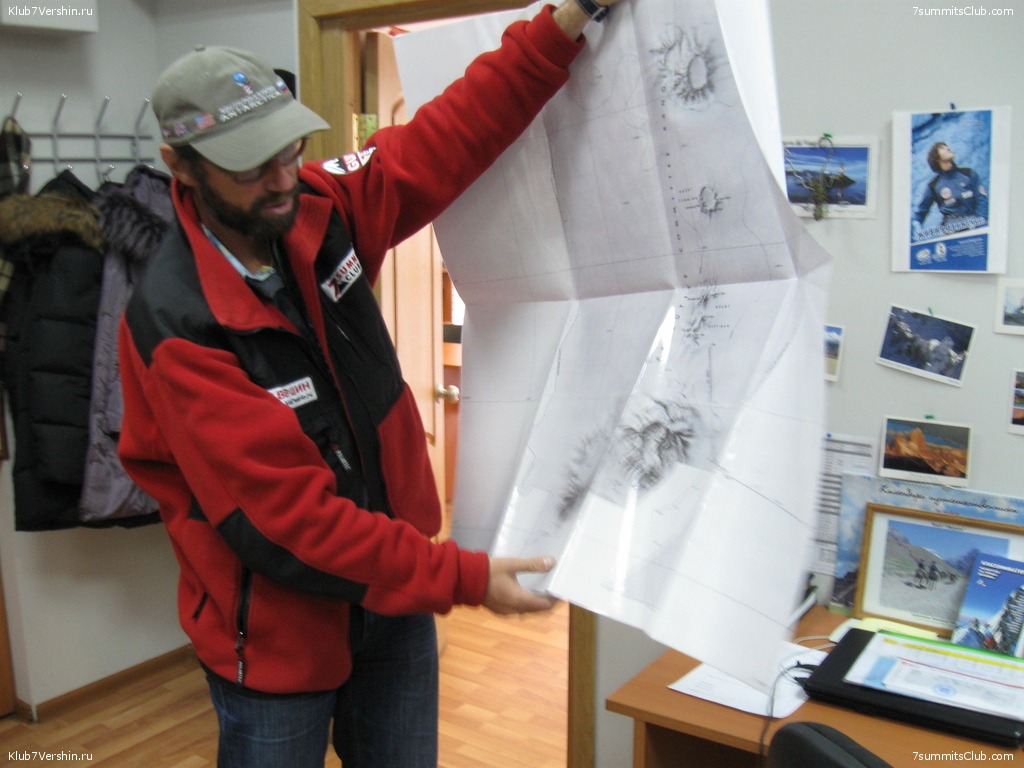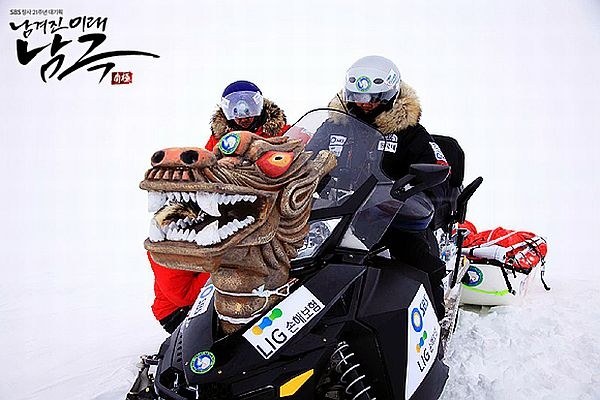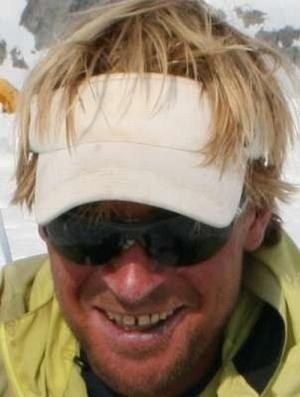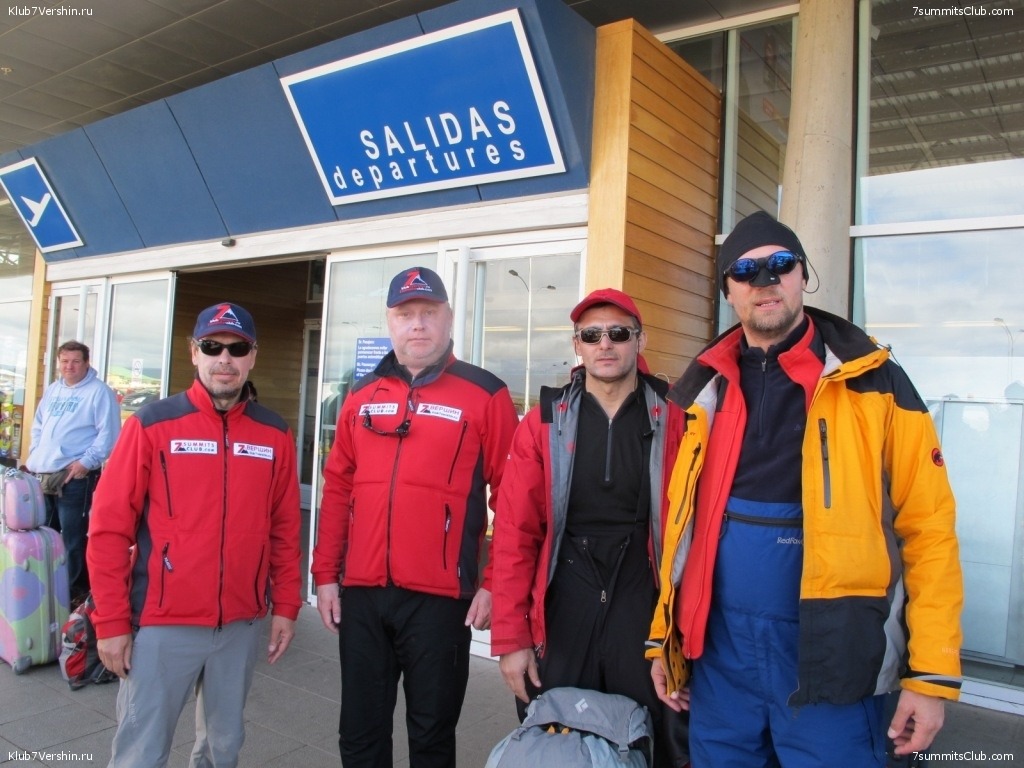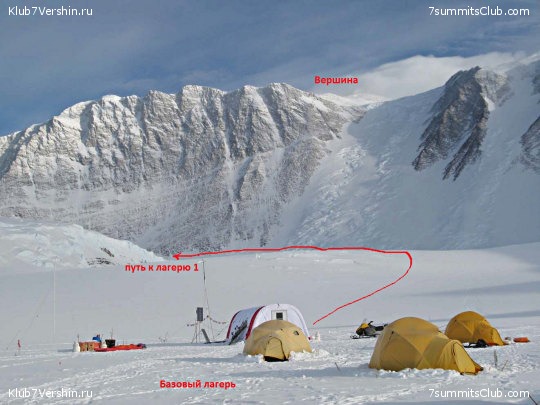Antarctica
New Year under the Vinson massif
Vinson.
Victor Boboc phones from Antarctica. December 31, a group of 7 Summits Club went on acclimatization outing and returned to the Vinson Massif base camp. Now they are ...
Victor Boboc phones from Antarctica. December 31, a group of 7 Summits Club went on acclimatization outing and returned to the Vinson Massif base camp. Now they are preparing for the New Year Eve. First, the New Year will be celebrated at the time of Hong Kong. Then at Moscow and at the Chilean-time...
1. Ko Kan Fai - Hong Kong
2. Liu Wai Ming Haston - Hong Kong
3. Alexander Viktorov
4. Igor Demjanenko
5. Sergey Dudko
6. Dmitry Krasnov
7. Dzhamilja Murtazina
8. Igor Tcherkashin
Guide 1 - Bobok Victor
Guide 2 - Tsang Chi Sing John - Hong Kong
The last degree. Luda Korobeshko called from the South Pole
South Pole.
12/29/2011 Lyudmila Korobeshko, George Kuzmin and Alexander Viktorov from 7 Summits Club expedition reached the South Pole. The last two days have been quite heavy and intense. Alexander Viktorov was patient with his foot, and then George ...
12/29/2011 Lyudmila Korobeshko, George Kuzmin and Alexander Viktorov from 7 Summits Club expedition reached the South Pole. The last two days have been quite heavy and intense. Alexander Viktorov was patient with his foot, and then George suddenly fall ill. All plans have been violated. It is especially valuable that the group was able to reach the Pole without help of plane...
Jordan Romero made the Seventh Summit
Vinson.
A 15-year-old American has become the youngest person to climb the highest mountains on each of the seven continents, completing the feat by summiting Antarctica's Mount Vinson over the weekend. Jordan Romero, who last year at age 13 became ...
A 15-year-old American has become the youngest person to climb the highest mountains on each of the seven continents, completing the feat by summiting Antarctica's Mount Vinson over the weekend.
Jordan Romero, who last year at age 13 became the youngest person to climb the world's tallest peak Mt. Everest, was descending to base camp Sunday after reaching the summit of Vinson Massif with a team that included his father and his stepmother, according to his team's website.
"We're at the roof of Antarctica," a member of Team Jordan said in a webcast from near the 16,067-foot (4,897-meter) peak on a frigid but "legendary day."
Romero beat the record previously held by Britain's George Atkinson, who in May completed the seven ascents at age 16.
Romero has been hooked on climbing from an early age. When he was just 10, he become the youngest person to climb Mt. Kilimanjaro, Africa's highest peak at 19,341 feet (5,895 meters).
Before his 11th birthday, he had another world record under his belt, summiting Europe's Mt. Elbrus, in Russia's Caucasus mountains in July 2007.
Five months later, it was the 22,841-foot (6,962-foot) Mt. Aconcagua in Argentina, followed by Alaska's Mt. McKinley at 20,320 feet (6,194 meters).
In September 2009 at age 11, he climbed Indonesia's Carstensz Pyramid, at 16,023 feet (6,194 meters) the tallest island peak in the world, breaking another record.
Eight months later in May 2010, he climbed Everest, and ever since he and his team had been preparing for his Antarctic expedition.
"Looking forward to tomorrow, and we'll make you guys proud and promise we'll come back home safe and sound," Romero said in a webcast Saturday, hours before he began the final ascent to Mt. Vinson's summit.
The team had intended to reach the top on Christmas Day, but ideal weather and good progress allowed them to summit a day ahead of schedule.
Our first group climbed Mount Vinson
Vinson.
Our guides Dima Ermakov and Viñtor Bobok have send a short message from the slopes of Mount Vinson. Today their group had climbed the top of the tallest summit of Antarctica. At the top there were five members and two guides. Members: ...
Our guides Dima Ermakov and Viñtor Bobok have send a short message from the slopes of Mount Vinson. Today their group had climbed the top of the tallest summit of Antarctica. At the top there were five members and two guides. Members: Konstantin Beirit, Pavel Kostrikin, Ivan Rudenko (Russia), Yury Lukjanov – (father and daughter from Kazakhstan).
Start at Vinson
Vinson.
Seven Summits Club, hello! Dmitry Ermakov and Victor Boboc from under the Vinson massif. Yesterday, we arrived safely at the Vinson base camp ... and now we are making comfort accommodation here. Today we are going to go to the first ...
Seven Summits Club, hello! Dmitry Ermakov and Victor Boboc from under the Vinson massif. Yesterday, we arrived safely at the Vinson base camp ... and now we are making comfort accommodation here. Today we are going to go to the first outing…
….
I Vinson (16-29 Dec). Mount Vinson. The tallest of Antarctica.
1 Beirit Konstantin
2 Kostrikin Pavel
3 Lukjanov Yury - Kazakhstan
4 Lukjanova Nadezhda - Kazakhstan
5 Rudenko Ivan
The guide 1 - Bobok Victor
The guide 2 - Ermakov Dmitry
Antarctic Ice Marathon and World record of Richard Donovan
South Pole.
7 December 2011: Remarkable records were set across the board at the seventh running of the Antarctic Ice Marathon races, the southernmost marathon in the world, over the weekend. More than 40 competitors from 15 countries gathered on the ...
7 December 2011: Remarkable records were set across the board at the seventh running of the Antarctic Ice Marathon races, the southernmost marathon in the world, over the weekend. More than 40 competitors from 15 countries gathered on the frozen continent to take part in half,-marathon, marathon and ultramarathon races that would test the resolve of the most steely of running enthusiasts.
The events, which are held at Union Glacier camp, are the only official foot races within the Antarctic Circle on the mainland continent. This year’s event was particularly special as it coincided with the Centenary year of Man reaching the South Pole. On 1 December, Clement Thevenet (FRA) dominated the men’s marathon (42.195km) distance when running a record time of 3:47:07. In amazingly bright sunshine and temperatures of -18C, the Frenchman led from start to finish to take the title ahead of the USA’s Alvin Matthews and Matthew Von Ertfelda.
Yvonne Brown (GBR) was a worthy winner of the women’s race in 4:26:10, finishing ahead of two previous North Pole Marathon winners, Emer Dooley (IRL) and Alison Hamlett (GBR). The first three finishers broke the previous female record.
On 2 December, the Antarctic 100km began at 13:00 GMT and it took Thevenet a mere 12:09:06 hrs, another new Antarctic record, to add the title to his marathon victory. It was a colder affair with windchill temperatures dropping down to about -25C and the prolonged exposure causing two competitors , including Thevenet, requiring IV fluids after the race. Former winner, Mark de Keyser (BEL) was a very close second with Dave Deany (AUS) third.
To round off the record setting weekend, Richard Donovan (IRL) ran an epic 100 miles in a day (24:35:02 hrs) to coincide with the Centenary year celebrations. Darkness was not a problem for the Irishman as there are 24 hours of daylight in the interior of the Antarctic at this time of year.
Registration is now open for next year's Antarctic Ice Marathon & 100k trip, which is scheduled to occur from 19th - 23rd November 2012. For full details, see www.icemarathon.com.
MEN'S MARATHON
1. Clement Thevenet (FRA) - 3:47:07 hrs
2. Alvin Matthews (USA) - 4:38:19 hrs
3. Matthew Von Ertfelda (USA) - 4:52:58 hrs
4. Simon Abrahams (GBR) - 4:56:49 hrs
4. Joey McBreary (USA) - 4:56:49 hrs
6. Krzysztof Szachna (POL) - 5:02:50 hrs
7. Dave Kennedy (USA) - 5:06:42 hrs
8. Errol Damelin (GBR) - 5:14:30 hrs
9. Taco Jongman (NED) - 5:23:00 hrs
10. Doug Carrell (USA) - 5:44:26 hrs
11. Christopher Duff (USA) - 5:53:58 hrs
12. Rusty Berther (AUS) - 6:02:12 hrs
13. Ray Miller (USA) - 6:16:29 hrs
14. Riet Van de Velde (BEL) - 6:28:31 hrs
15. Ladislav Simek (CZE) - 6:29:52 hrs
16. Michael Parrott (CAN) - 6:39:06 hrs
17. Michael Bartl (GER) - 6:51:46 hrs
18. Jeremy Cashen (NZL) - 7:28:10
19. Tom Cashen (NZL) - 7:28:11 hrs
20. Mark Kooijman (PHI) - 7:31:18 hrs
21. Don Kern (USA) - 7:53:38 hrs
22. Sebastian Armenault (ARG) - 8:09:41 hrs
23. Anand Anantharaman (IND) - 8:45:40 hrs
* George Nichols (USA) ran a marathon on 2 December in 8:30:12 hrs
WOMEN'S MARATHON
1. Yvonne Brown (GBR) - 4:26:10 hrs
2. Emer Dooley (IRL) - 4:41:30 hrs
3. Alison Hamlett (GBR)- 4:46:39
4. Elizabeth Chapman (GBR) - 5:43:57 hrs
5. Sarah Ames (GER)- 6:35:58
6. Mala Honnatti (IND)- 7:11:26
7. Sophie Woo (NED) - 7:31:18 hrs
8. Rebecca Frechette (USA)- 8:43:50
9. Linh Huynh (CAN)- 8:44:53
* Bonnie Bailey (USA) ran a marathon on 2 December in 8:30:12 hrs
ANTARCTIC 100 KM
1. Clement Thevenet (FRA) - 12:09:06 hrs
2. Marc de Keyser (BEL) - 12:14:18 hrs
3. Dave Deany (AUS) - 13:48:14 hrs
4. Brent Weigner (USA) - 15:41:04 hrs
5. Matthew Von Ertfelda (USA) - 20:03:42 hrs
100 MILE POLAR CENTENARY RUN
1. Richard Donovan (IRL) - 24:35:02 hrs
WHITE CONTINENT HALF-MARATHON
1. Chad Bruce (CAN) - 2:30.32 hrs
2. Matt Kirby (GBR) - 3:01:01 hrs
*******
Richard Donovan, 42, from Galway in the west of Ireland, began his challenge in numbing sub-zero temperatures in Antarctica on January 31 and finished in Sydney just five days, nine hours and eight minutes later.
"What he did was staggering, quite remarkable," John O'Shea, founder and chief executive of third world charity Goal, told AFP, adding that the money raised would help the charity's work in Sudan's Darfur region.
"It is extraordinary given the conditions and the time scale involved. I can't believe he managed it. I am in awe of what he achieved to bring attention to the tragedy of Dafur and to alleviate the suffering there.
After starting in the Antarctic, Mr Donovan got on a plane to South Africa and completed a marathon in Cape Town. He then flew to Dubai and ran another one, completing three marathons in two days.
Braving snow storms that shut down London on Monday, Mr Donovan completed his fourth marathon there before going to Toronto in Canada for his fifth. Then it was on to Chile for a Santiago marathon and finally to Australia.
Over 129 hours, Mr Donovan endured extreme temperatures and only slept in the economy class seats of airplanes between continents, said Mr O'Shea.
In total he ran 183 miles and flew tens of thousands of miles.
"It brings into focus how little the world does and how much one man does for Dafur. He feels almost as strongly as I do about the lack of an adequate international response in Dafur where 400,000 people have died," Mr O'Shea said.
Goal has been working in Sudan since 1985 and spent about 18 million euros (£15.7 million) there on aid in 2007.
In 2002, Mr Donovan became the first person in the world to run a marathon at both the North and South Poles.
He now organises the northernmost marathon on earth, the North Pole Marathon, and the southernmost marathon on earth, the Antarctic Ice Marathon.
Mr Donovan has won the South Pole Marathon, the Inca Trail Marathon, the Everest Challenge Marathon, the Antarctic 100km and the Himalayan 100-Mile Stage Race.
Right from the Pole
South Pole.
Bobok, right from the center of Antarctica. Today, December 14, Igor and I, together, two years later, and after 100 years since the first man reached the South Pole, we arrived at it. We are just happy with what is happening ! Ahead is a ...
Bobok, right from the center of Antarctica. Today, December 14, Igor and I, together, two years later, and after 100 years since the first man reached the South Pole, we arrived at it. We are just happy with what is happening ! Ahead is a rich cultural program, meeting with Prime Minister of Norway, the whole ceremony of the meeting. We are all very well, all is well. Life has gone right! All ardent greetings! Byu!
We are in ten kilometers from the South Pole
South Pole.
Here Bobok Victor from Antarctica. All is excellent for us! We are in ten kilometers from the South Pole. Now we lie in tent and we will be waiting for the ceremony "the Entry on the Pole", on 14th of December. That is all – we ...
Here Bobok Victor from Antarctica. All is excellent for us! We are in ten kilometers from the South Pole. Now we lie in tent and we will be waiting for the ceremony "the Entry on the Pole", on 14th of December. That is all – we have crossed our 250 kilometers. And now a day of rest that we deserve. We brush up, clean up. And as I have already told, we wait for an input ceremony. Everything is OK. We made it ! The last 10 kilometers we get in any case, any weather. But - on December, 14th.
All ardent greetings!
Victor Bobok and Igor Grishkov
Victor Bobok and Igor Grishkov go along Amundsen's camps
South Pole.
Victor Bobok and Igor Grishkov continue their journey to the South Pole. They go independently, separately from the Norwegian expedition. «For today we have passed 24 km, it remains for three days. If to look on a map, consider on a ...
Victor Bobok and Igor Grishkov continue their journey to the South Pole. They go independently, separately from the Norwegian expedition. «For today we have passed 24 km, it remains for three days. If to look on a map, consider on a straight line, it remains 55 km form 250 km on start. In a reality it will be 60 - 65 kilometers with all detours and obstacles.
We go in accuracy along Amundsen's camps. We read his diaries, we are verifying. The weather as it isn't strange, is the same as hundred years ago. Sometimes the horizon merges with the earth and the sky, then it is visible nothing. Temperatures - approximately from -20 to, one time -50 The most difficult was in the beginning of our way, due the absence of acclimatization at height and heavy sledge!
An altitude of a point of disembarkation was 3150 m., and the Pole, approximately 3800 m.
Every day we worked from 5-30 a.m. till 10 p.m.. The wind somehow blew, 12-19 meters per second, a real storm. So we have managed in this wind to remove our tent, to pass 8,5 km and to put it again! In the beginning we carried sledge on 50 kg everyone. But the sledges become now easier, we eat, we burn fuel down.
We hope to reach the Pole on December, 14th under the Russian flag with shouts «Forward!». Exactly 100 years after Amundsen.
Now we observe a bad weather, as in Amundsen's diaries.
All greetings!
Victor Bobok and Igor Grishkov
The plan for a season in Antarctica
South Pole.
Yesterday Alexander Abramov and Dmitry Ermakov have taken off for the South America for preparation of the main part of the Antarctic season. The large quantity of luggage has demanded big efforts to push in the plane. The season program ...
Yesterday Alexander Abramov and Dmitry Ermakov have taken off for the South America for preparation of the main part of the Antarctic season. The large quantity of luggage has demanded big efforts to push in the plane. The season program will be strained, and in Antarctica there is no place to buy there. So work, nerves, time – all should be spent, including in advance. Lyudmila Korobeshko will take off for Chile on Monday. So for time, this South American country becomes the main site of our Club.
During change in Madrid the friendly meeting with the Spanish climbers has occurred
The schedule of groups for the Antarctic summer
I Last Degree (16-29 Dec). The South Pole. Last degree.
1 Viktorov Alexander
2 Kuzmin George
The guide - Korobeshko Lyudmila
I Vinson (16-29 Dec). Mount Vinson. The tallest of Antarctica.
1 Beirit Konstantin
2 Kostrikin Pavel
3 Lukjanov Yury - Kazakhstan
4 Lukjanova Nadezhda - Kazakhstan
5 Rudenko Ivan
The guide 1 - Bobok Victor
The guide 2 - Ermakov Dmitry
III Vinson (29 Dec-12 JAN).
1 Ko Kan Fai - Hong Kong
2 Liu Wai Ming Haston - Hong Kong
3 Viktorov Alexander
4 Demjanenko Igor
5 Dudko Sergey
6 Krasnov Dmitry
7 Murtazina Dzhamilja
8 Tcherkashin Igor
The guide 1 - Bobok Victor
The guide 2 - Tsang Chi Sing John - Hong Kong
IV Last Degree (05-19 JAN) the South Pole. Last degree
1 Jovovic Dragan - Serbia
2 Kuznetsov Dmitry
3 Pankratenko Vladimir
The guide - Ermakov Dmitry
Victor Bobok is calling from Antractica.
South Pole.
Victor Bobok from Antractica. For 8 days we have passed more than 100 kilometers. And it remains about 140 km to the Pole. In this time, all was occurred that Antarctica can give. From a full calm and good weather: a minus thirty one, ...
Victor Bobok from Antractica. For 8 days we have passed more than 100 kilometers. And it remains about 140 km to the Pole. In this time, all was occurred that Antarctica can give. From a full calm and good weather: a minus thirty one, without wind, the sun … To a storm with parameters of 13-19 meters per second. And in this weather we have managed to remove our tent, to cross about 8, 5 kilometers. And we could put this tent. So all is good, greetings from Antarctica! By ! So long!
Victor Bobok – «At last!»
South Pole.
According blogs of our Norwegian colleagues and Victor's short message, the group left on a route. More than week they have spent on the basis of Union Glacier. And before the delay for a week was in in Punta Arenas. At first, the weather ...
According blogs of our Norwegian colleagues and Victor's short message, the group left on a route. More than week they have spent on the basis of Union Glacier. And before the delay for a week was in in Punta Arenas. At first, the weather was bad, then malfunction of the plane, then – emergency flight to Vinson. Backlog from the schedule makes almost half-month. The commands which have left on a route earlier, is successful moving on Amundsen and Scott ways. Our expedition only begins the program. Within two days the group has been transfered from the Union Gleacier on the glacier of Axel Hejberg, to the foot of Peak of Nansen, the ascension on which is a part of the obligatory program of the Norwegian anniversary. Our well trained group started quickly forward, covering up to 25 km a day. High tempo for heavy loaded people.
Some pictures from Union Glacier >>>>>>>
In Antarctica! New Waiting … Videos from BASK Co ..
South Pole.
On Thursday, representatives of ALE warned that we should be ready by 6 a.m. Friday. In fact, the departure from Punta Arenas took place around 3 p.m. local time. The adventures began. Our IL-76 and the flight to Antarctica, for beginners, ...
On Thursday, representatives of ALE warned that we should be ready by 6 a.m. Friday. In fact, the departure from Punta Arenas took place around 3 p.m. local time. The adventures began. Our IL-76 and the flight to Antarctica, for beginners, this is a real adventure. Landing, as always, was not soft.
Alas, the first news from the owners, was not good. Axel Heiberg Glacier area, where the group must deliver the following by a smaller plane, is closed by clouds. Again, wait! Now, on the base of Union Glacier. All members are eager to do something, go on skis, walking through the neighborhood. Conditions are excellent, the temperature is about minus ten, around us - magnificent mountains, good snow. And on Sunday evening, representatives of ALE promised flight on Monday.
Before the beginning of the expedition, Victor Bobok gave an interview to the company BASK, which equipment has proved itself very well in our Antarctic expeditions.
Seven Summits. New “members of the club” and new challengers
Vinson.
The first in Denmark ... Stina Glavind became the first woman in Denmark, which managed to complete the program "Seven Summits". July 14, 2011 she went to the finishing summit of the list - Carstensz Pyramid. She is 36 years old, ...
The first in Denmark ... Stina Glavind became the first woman in Denmark, which managed to complete the program "Seven Summits". July 14, 2011 she went to the finishing summit of the list - Carstensz Pyramid. She is 36 years old, grew up and lives on the island of Bornholm, far enough away from the capital. Stina is a manager of Carlsberg, which has helped her in raising funds for trips.
On May 22, 2010. Mount Everest. "It was one of the greatest experiences of my life..."
"The purpose of life, you define yourself. I'm happy to have found a hobby, and I managed to get away from everyday life, from coffee with cream and Dancing with the Stars on TV."
Shawn Dawson: Seven Summits - the seven charitable projects
Shawn Dawson - a successful Canadian businessman. He walked up the steps a business career: starting with restaurants, then retail and real estate, then in the media business. Once, friends invited him to go with them on Mount Kilimanjaro. Traveling to Africa has changed the priorities in life of Canadian. He became closely acquainted with the organization Habitat for Humanity, a charitable group engaged in construction in poor African countries. The idea was born - to climb seven summits for charity. And the seven charitable projects add on to the project climbs. Dawson has created a special fund called the Dream Mountains, to implement their plans.
http://www.dreammountains.com/
Seven Summits program is completed and a positive balance amounted to $ 142.114. This amount has gone to seven charitable projects. But the work continues. Dawson gathers a group of track to the foot of Mount Everest, maybe he will come up with something more interesting.
Dawson completed the program climbing Carstensz, which had reached on May 4, 2011. Finnish climber Atte Miettinen was with his team, one of those who are currently studying Punto Arenas waiting for a flight to Antactica.
For the whole Finland
In fact, Veikka Gustafsson (b. 01/14/1968) represents the whole Finnish climbing. A professional mountain climber, he achieved a lot: 14 eight-thousanders without artificial oxygen, and without permanent partners. Frankly, I do not know what he miss and had climb for the seven summits yet. At least he was at Vinson before..
Veikka – the high-class climber
It is not surprising that Atte Miettinen invited Veikka to joint climbs on top of missing the "seven". Namely: Vinson, Aconcagua, McKinley and Mount Everest.
Atte lives for many years in Dubai with his wife an Englishwoman. His business projects related to information technology, and thus transcend political and geographical boundaries. Miettinen also started with two trips to Mount Kilimanjaro. Then there was Elbrus, attempt to Aconcagua and this year - Carstensz. Despite a decent amount for their own accounts, Atte had found for his project quite good sponsors. Red Bull is among the sponsors - http://sevensummits.fi/
Start of the Great Jubilee Season in Antarctica
South Pole.
The season of 2011-2012 marks the centenary of Amundsen's and Scott's expeditions to the South Pole. Many expeditions have already started and many arrive to Punta Arenas and waiting for next flight to Antarctica. Almost all of them devote ...
The season of 2011-2012 marks the centenary of Amundsen's and Scott's expeditions to the South Pole. Many expeditions have already started and many arrive to Punta Arenas and waiting for next flight to Antarctica. Almost all of them devote their travel to Amundsen's or Scott's Centenary celebrations, paying homage to the courage and determination of these great men and their colleagues. Among them two our travelers Victor Bobok and Igor Grishkov who take part in the South Pole Jubilee Expedition 1911-2011.
List of expeditions
http://www.antarctic-logistics.com/news.html
South Pole Jubilee Expedition 1911-2011
Norwegian polar explorers Christian Eide and Borge Ousland have organized a South Pole Jubilee Expedition. The Jubilee teams will follow Amundsen's 700 km route up the Axel Heiberg Glacier, arriving at the South Pole by December 14. Along the way they plan to climb Mt Nansen, which has only had one previous ascent. In 2010 Christian Eide set the World record for fastest solo unsupported ski to the South Pole in 2011, while Borge Ousland completed the first solo Antarctic crossing in 1996 and was the first person to ski solo, with no re-supply to the North Pole.
Sørpolen 1911-2011
Sørpolen 1911-2011 will follow Amundsen's route from the Bay of Whales to the South Pole, covering the distance in the same number of days as the famous explorer. Led by Jan-Gunnar Winther, head of the Norsk Polarinstitutt, this expedition will showcase Norwegian polar history and spotlight current climatic and environmental challenges. The Expedition is part of the Nansen-Amundsen Year that honors both Amundsen's South Pole conquest and 150 years since the birth of Arctic explorer Fridtjof Nansen.
http://sorpolen2011.npolar.no/en/ (English)
The South Pole - 100 Years After
Asle Johansen crossed Greenland in 1988, one hundred years after Nansen, using period clothing and equipment. Now Johansen will celebrate the Amundsen Centenary in a similar fashion, with teammates Agnar Berg and Gaute Grindhaug. The three Norwegians will follow Amundsen's Axel Heiberg route from the Ross Ice Shelf to the South Pole using replica clothing and equipment to better understand Amundsen's journey. Johansen, a physician and researcher specializing in the body's response to extreme physical and mental stress, emphasizes that this is not just a replica expedition, but a scientific journey.
http://www.nansenamundsen.no/no/events/okt/asle-t-johansen-sorpolekspedisjon.html (Norwegian)
South Pole 1911-2011
Albert Bosch and Carles Gel from Spain will ski unsupported from Hercules Inlet to the South Pole. They plan to arrive by December 14 and thus commemorate Roald Amundsen's historic feat.
http://www.albertbosch.info/en/minisite/29/
Hvitserk Ski South Pole
Norwegian Outfitter Hvitserk will lead an Anniversary South Pole Expedition. The team will follow the 'Messner Route' and ski unsupported to the South Pole, arriving by December 14 to join the Amundsen Centenary celebrations.
Steffen Dahl
Norwegian Steffen Dahl is skiing to both North and South Poles in 2011 to honor the achievements of Fridtjof Nansen and Roald Amundsen. Dahl reached the North Pole on April 11 and will ski alone and unsupported from Hercules Inlet to the South Pole.
http://polfarer.no/ (Norwegian)
Scott-Amundsen Centenary Race 2011-12
Two teams. Two routes. Skiing unsupported to the South Pole. Six members of the British Army will re-trace Amundsen's and Scott's routes to the South Pole, in a tribute to the courage, determination and pioneering spirit of these great explorers. The Amundsen team, led by Henry Worsley (Shackleton Centenary Expedition 2008) will depart from the Bay of Whales, cross the Ross Ice Shelf and ascend the Axel Heiberg Glacier. Mark Langridge (solo to the Pole 2008) will lead the Scott team from Cape Evans, across the ice shelf and up the Beardmore Glacier. Both teams expect to cover their distance in about 70 days, arriving at the South Pole in early January.
http://scottamundsenrace.org/
One Call Wintercamp
Nine Norwegian skiers will ski and kite-ski from 88° 30'S to the South Pole. The expedition celebrates Roald Amundsen's dream to achieve something many believed was unattainable.
http://www.onecall.no/wintercamp2011/ (Norwegian)
Ski Last Degree Expeditions
A number of Antarctic enthusiasts, including the Norwegian Prime Minister, will ski shorter distances to the South Pole in celebration of the Amundsen and Scott Centenaries. Many of the groups will ani ski last degree, the last 60 nautical miles, taking from 7 to 10 days to complete their journey.
Other Antarctic Crossing and Ski South Pole-Return Expeditions
Kaspersky ONE Transantarctic Expedition
Felicity Aston (2009 Kaspersky Lab Commonwealth Expedition Leader) is heading back to Antarctica - this time solo. Felicity will make a 1700km, 65-day journey, becoming the first woman in the world to cross Antarctica alone. The documentary film about Felicity's 2009 expedition will be screened at the Banff Mountain and Dijon Adventure Film Festivals this November. But don't expect to see Felicity there!
http://www.kasperskyonetransantarcticexpedition.com/
Aleksander Gamme
Aleksander Gamme will ski solo from Hercules Inlet to the South Pole, then turn around and ski solo back to the edge of the Antarctic continent. Inspired by Amundsen. Gamme admits to feeling "humble" when he thinks about the physical and mental challenges of being alone in the icy wilderness for so long.
Mark George
Explorer and motivational speaker Mark George plans to ski solo and unsupported from Hercules Inlet to the South Pole, then return by kite-ski to the coast, for a total of 2,300 kms.
http://www.searchingforsanta.com.au/
Crossing the Ice
Two Australians Justin Jones and James Castrission will trek from the edge of Antarctica to the South Pole and back, without assistance of any kind. Their expedition will raise funds for You Can, a fundraising campaign to build specialized youth cancer centres across Australia.
http://casandjonesy.com.au/expeditions/crossing-the-ice/
South Pole and Back - Ski and Kite
Polar explorer and speed-record holder Richard Weber will lead a 35 day, unsupported trek from the "Messner Start" on the Filchner Ice Shelf to the South Pole. From the South Pole the team will kite-ski back to Hercules Inlet at the edge of the continent.
http://www.weberarctic.com/
Ski South Pole - Messner Start and Hercules Inlet
ANI Ski South Pole Messner
ANI guide Hannah McKeand holds the record for most ski expeditions from the Antarctic coast to the South Pole - and this year she will again cross the icy continent. McKeand and fellow ANI guide Charlie Patton will lead two ANI Ski South Pole - Messner teams to the South Pole.
Pole to Pole Run
When endurance runner Pat Farmer starts his Antarctic expedition, he will already have run two marathons every day, no days off, for almost a year and clocked nearly 13,000 miles through 14 countries. This is the last leg on an incredible trek from the North Pole to the South Pole to raise $100 million for the International Red Cross.
http://www.poletopolerun.com/
Mark Wood
"The North South Solo expedition has been classed as the toughest expedition on the planet." But this is exactly what polar explorer Mark Wood plans to undertake. He will ski from Hercules Inlet to the South Pole. Then next spring, head to the Canadian Arctic to ski solo to the North Pole.
PolarExplorers Ski South Pole - Hercules
This guided expedition will traverse from Hercules Inlet at the edge of the Antarctic continent, to the South Pole.
Thompson Reuters Eikon South Pole Expedition
It's about challenge and proving greener technologies for Polar exploration, says their website. This expedition will attempt to beat the overland record to the Pole in a specially-built, efficient, bio-fuelled vehicle. They will use solar panels to further reduce their carbon footprint and real-time GPS Satellite communications and tracking.
http://thomsonreuterseikon.com/south-pole-expedition/
To Celebrate the New Year in Antarctica!!! There are 3 places in Antarctica to the South Pole, and Massif Vinson.
South Pole.
Programs: The ascent of Massif Vinson - the highest peak of AntarcticaExpedition to the South Pole. "The last degree" (Ski tour 111êì). Antarctica Hello friends! We still have the last 3 places in Antarctica to the South Pole, and ...
Programs:
The ascent of Massif Vinson - the highest peak of Antarctica
Expedition to the South Pole. "The last degree" (Ski tour 111êì). Antarctica
Hello friends!
We still have the last 3 places in Antarctica to the South Pole, and Vinson Massif.
Vinson Massif - check in from December 26 to January 12.
The South Pole - check in from 2 to 19 January.
On all other dates groups have already been formed and there are no places!
Now we have 2 groups of "the Last degree" at the South Pole:
From 13 to 29 December (full)
and from 2 to 19 January (there are 3 places)
2 groups on the Vinson Massif:
From 13 to 29 December (full)
From December 26 to January 12(there are 2 places)
Be defined urgently till August, 15th
Opportunity only knocks once!
Seven summits of Steve Giesecke
Vinson.
There are few things on earth as rare as a truly perfect silence. Steve Giesecke would know. Having summitted the highest peak on each of the world's seven continents - each on the first attempt - Giesecke has been everywhere from the ...
There are few things on earth as rare as a truly perfect silence. Steve Giesecke would know.
Having summitted the highest peak on each of the world's seven continents - each on the first attempt - Giesecke has been everywhere from the equatorial jungles of Indonesia, and most recently, to the ice sheets of Antarctica.
The retired Air Force colonel returned from his final climb there only a few weeks ago. It was at Mount Vinson, on the world's most remote continent, where he experienced the most enveloping stillness he's ever known.
"When there's no wind - often there's wind - but when there's no wind, it's the quietest place on Earth," Giesecke said.
He found himself on a continent without a shred of development - no roads, cars, or people outside his group. The ice and snow absorbed any ambient noise around them. Even the voice of the nearest person couldn't travel far.
"You can hear your eyes blink," he said.
Like a lot of contractors at Joint Base Lewis-McChord, Giesecke spends most of his days at a desk. He works for the National Center for Telehealth and Technology, a Department of Defense office working to meet the psychological health and traumatic brain injury needs of the military community by developing and implementing technology solutions.
"I'm working on one of our initiatives that will bring the mental health programs of the DoD and VA closer together through collaboration on new technology assessment and development, in the areas of Web-based resources, social media and mobile applications," Giesecke said.
But in spite of the hours he spends in front of a computer, Giesecke's passion is pushing himself to the limit in some of the world's most inspiring locations. The result is a spectacular list of experiences - and more than a few examples of sheer determination.
Giesecke grew up in the Northwest, where hiking in the region's mountain ranges was almost a given. After college he climbed the Jungfrau in the Swiss Alps, which sparked an interest in climbing. When he joined the Air Force, he made a point of climbing mountains in the western U.S. between assignments.
Then in 1989, while stationed in Alaska, he climbed Denali, also known as Mount McKinley.
At 20,320 feet tall, Denali is the highest peak in North America and experiences some of the most severe weather in the world. In 1989 only 51 percent of climbers summitted the mountain, according to the National Parks Service. Today that number is 55 percent.
Giesecke had what he called "the usual experiences" on Denali. The weather was bad and only three of the people in his party made it to the top. At one point another group's tent was blown loose from the ridge above. Only one of the climbers made it out in time.
"It was very difficult back then," Giesecke said. "It still is very difficult, but back then things were a little bit heavier. You needed to take more time on the mountain to move the heavier equipment up."
About the same time, he read the book "Seven Summits" by Dick Bass, Frank Wells and Rick Ridgeway. Though at the time Giesecke thought the task out of reach for himself, the story of Bass and Wells, the first two men to successfully summit all seven peaks, would stick with him for years.
SETTING THE GOAL
When he retired from the Air Force a decade ago, Giesecke moved back to the Pacific Northwest, joined The Mountaineers club and started taking climbing classes. He continued climbing in the area, including summitting Mount Rainier multiple times. But Giesecke wanted a challenge that was bigger than he was. He wanted to know exactly how far he could go.
"I was in peak condition. I knew that if I was ever even going to have a shot at climbing the seven summits, any more of the seven summits, I knew it was then," Giesecke said.
In 2007 he signed up for a trip to Aconcagua on the Argentinean-Chilean border. The 22,841-foot peak is the highest outside of Asia. Giesecke told himself that if he made it to the top without any significant problems he would go straight to Nepal to climb Mount Everest. And in March of 2007 - after a U.S. pit stop just long enough to renew his passport - that's exactly what he did.
According to friend and fellow climber Gary Talcott, who grew up with Giesecke in Olympia, this level of resolve isn't out of the norm.
"He is very ambitious, goal oriented and determined to summit," Talcott said via e-mail, recalling a time when Giesecke helped him lead a group of climbers down from Mount Hood in whiteout conditions.
"It's fun to hear about his latest plans or last adventure," Talcott said. "I can just see the wheels turning."
The Everest trip took him two months.
Mount Everest is the tallest mountain above sea level in the world. A 1999 survey sponsored by the National Geographic Society puts the mountain at 29,035 feet tall, so high that its peak reaches into the lower limits of the jet stream. Sustained winds at the top can exceed 100 miles per hour. In July, the warmest month on the mountain, the average daytime temperature at the summit is -2 F. In January, the coldest month, the average is -33 F but can drop as low as -76 F.
Conditions are, in a word, extreme. Giesecke's experience was nothing less.
Among the final hurdles before reaching Everest's summit is the Cornice Traverse, a 400-foot knife-edged ridge leading to the Hillary Step. Teetering too far to the left would send a climber down 8,000 feet along the Southwest Face. A misstep to the right would result in plummeting 10,000 feet down the Kangshung Face.
It was here that the snow beneath Giesecke broke through, sending him sliding downward.
"I only fell about 20 feet, but the air beneath my boots was endless," he said.
Fortunately the anchors held, and he continued toward the top. After tackling the final obstacle, the 40-foot climb up the Hillary Step, Giesecke summited the mountain.
"I went up Everest on May 20, 2007, and that was a fantastic day," he said, "to be on top of the world."
DOWNHILL FROM EVEREST
The following year he took on Mount Elbrus (18,510 feet tall) on the border between Russia and Georgia. After that he went straight to Mount Kilimanjaro (19,340 feet tall) in Tanzania, leaving the area only two days before Russia's invasion of Georgia in the summer of 2008.
His next challenge was Carstensz Pyramid in Indonesia. Because the highest point on the continent of Australia is little more than a hike, some climbers take on the 16,500-foot peak to check Oceania off their lists.
While the climb itself includes a 2,000 foot wall climb topped by a Tyrolean traverse-a gap of air climbers cross on a rope suspended between two high points-getting there is a challenge all its own. Even reaching base camp requires a two-week trek through the jungle, days away from civilization.
According to Giesecke, it's the toughest trail he's ever been on.
"The face climb itself was actually fun," he said. "The jungle approach was a once in a lifetime thing. I wouldn't do that again."
And so, there was only one left. Mount Vinson, Antarctica's tallest peak, stands at 16,050 feet tall. But to get to it, Giesecke would have to wait.
In January he traveled to Punta Arenas, Chile. From there he planned to fly to Antarctica - but things were not as simple as he had hoped. A strike over rising fuel prices shut down the area, leaving Giesecke cut off from the last of the seven summits.
"It's challenging to accept things beyond my control," he said.
For him, waiting is the hardest part about mountain climbing - knowing that the goal is out there ahead of you, but not being able to reach out and grab it.
Giesecke was stranded in Patagonia for two weeks waiting for the strike to end. Not everyone in the group was as patient or invested. Some went home before so much as setting foot on Antarctica.
Not Giesecke.
"I'd gone all the way down to the end of South America to complete this trip," he said. "That's what I intended to do and that's what I did."
On Jan. 27, he made it to the top, finishing a journey he started in 1989.
"It's still sinking in," Giesecke said. "When I finished I came back home and I got out the book 'Seven Summits' and looked at it again."
Like explorers before him, Giesecke has been asked time and again why he does it. And really, there are countless reasons - the camaraderie of accomplishing great things with other people, the physical challenge, George Mallory's classic "Because it's there."
But for Giesecke, perhaps what it really comes down to the liberating challenge.
"I think when you're climbing it's one of the ultimate expressions of freedom," he said.
There aren't many places left with so few restraints, he said. But when he's pushing himself toward the summit of some impossibly high mountain, the only thing holding him back is how high he can climb.
By Marisa Petrich (Northwest Guardian)
Alexander Abramov has returned home, that is, to our office
South Pole.
A high-day in the 7 Summits Club. Our leader Alexander Abramov returned from Antarctica. Now he is going through a transitional period to get used to germs, darkness, fuss, heavy traffic etc. However, a couple of days, he will be working at ...
A high-day in the 7 Summits Club. Our leader Alexander Abramov returned from Antarctica. Now he is going through a transitional period to get used to germs, darkness, fuss, heavy traffic etc. However, a couple of days, he will be working at full capacity. Expedition on Everest will start soon, it needs a lot of work. By the way, you still have a good opportunity to join our expedition. Details here >>>>>>>
And here are some stories from Antarctica. Photos from Mt. Sidley are posted here >>>>>>>
New records of Antarctica
South Pole.
British team sets new speed record for Antarctic crossing. In late November, a group of British adventurers and scientists set off on a mission to the interior of the Antarctic continent in specially designed research vehicles. Their plan ...
British team sets new speed record for Antarctic crossing. In late November, a group of British adventurers and scientists set off on a mission to the interior of the Antarctic continent in specially designed research vehicles. Their plan was to undertake several environmental research experiments while journeying through one of the most in hospitable environments on the planet, but they also managed to set a new speed record for an Antarctic crossing at the same time.
Dubbed the Moon-Regan Transantarctic Expedition in favor of its two organizers, Andrew Moon and Andrew Regan, the plan was for the team to conduct research along the way. For example, they collected samples of the Antarctic snow in order to test the impact of pollutants in the atmosphere of the Southern Hemisphere on the frozen continent itself. They also drove a specially designed snow buggy, powered by biofuels, in order to see how those experimental fuels performed in extreme conditions.
By all accounts, those research elements came off very well, but the real success of the mission was the speed crossing. It took the team just 13 days to drive from the Union Glacier Base to the Ross Ice Shelf, by way of the South Pole, on the far side of the continent. The expedition covered 1209 miles in 303 hours, using specially designed ground penetrating radar to help them avoid crevasses and other obstacles.
The expediton actually reached their destination back on December 9th, but then turned around and made the return trip so that the 10-man team, along with all their research vehicles and gear, could be plucked from the ice by Antarctic-Logistics and Expeditions, a company that specializes in delivering explorers to Antarctica. That happened last week, when the team was returned to Punta Arenas, Chile before making their way back home in time for the holidays.
Taking just 13 days to cross Antarctica is quite an impressive feat. While the team did indeed use motorized vehicles to do it, the terrain that they crossed is quite brutal on any kind of machine and the cold weather played havoc with their engines at times. Throw in the very real danger of driving into a crevasse, and you can start to appreciate the challenges of such a drive. This just might have been the most challenging road trip ever.
*******
Weather blocks expedition team from crossing Antarctica
A Cloudy Antarctica Stymies Solar Snowmobile Trek
A Korean expedition team looking to trek across Antarctica using solar-powered snowmobiles has run into trouble as unseasonably humid weather leaves the usually sunny and clear summer skies overcast and dull.
The expedition, led by veteran mountaineer Park Young-seok, set off from Antarctica’s Patriot Hill in late December on a 1,056km journey to the South Pole, but the from the beginning the team has been beset by difficulties, not least of which is heavy cloud cover – part of the massive storm system causing record rainfall on the Australian mainland – which dumped more snow than the region has seen in 20 years.
The initial idea was to utilise Antarctica’s "endless summer," in which the sun never fully sets from November through until February, a major bonus when running heavy machinery with solar power. But the team’s best laid plans played second fiddle to the weather gods and Antarctica’s white night never eventuated, leaving the team 330km from their destination. Unless they can reach the South Pole by Sunday, they will have to abandon solar-powered sledding and fill their snowmobiles with gasoline to make it back to base camp.
This solar energy-blocking cloud greatly impacted the portable solar recharging equipment for the team's eco-friendly snowmobiles and other camp equipment for much of the time. The solar recharging stations use high-efficiency SunPower solar panels. In full sun they can provide enough power for a three hour drive from a nine hour charge.
Park’s expedition will be made into a documentary for the Seoul Broadcasting System as part of its 21st anniversary year celebrations. They hope the trip will raise the profile of solar energy use in Korea and around the world.--
*******
Norwegian breaks South Pole record
Christian Eide, a 35-year-old expedition leader from Oslo, was still relishing his record-breaking solo trek to the South Pole over the weekend. He arrived at his goal last Thursday, just 24 days, one hour and 13 minutes after leaving Hercules Inlet on December 20, 1,150 kilometers away from his goal.
Oslo expedition leader Christian Eide, after breaking a world record skiing to the South Pole.
His solo world record soundly beat that set by American Todd Carmichael, who used 39 days and seven hours. Eide said he was so excited as he neared his destination that he couldn’t manage to sleep on the last night. He had expected to spend 30 days skiing to the South Pole, so surprised himself with his own speed.
“I just had to keep going,” said Eide, who runs an Oslo-based expedition company called L’atitude. He arrived on Thursday January 13, after skiing alone for three-and-a-half weeks. He average around 47 kilometers a day, but skied around 90 on the last day.
He wrote in his firm’s online diary, though, that he didn’t get a very warm welcome from the Americans running the Scott-Amundsen base. ”I got a strict message that I wasn’t allowed to go inside the base to get my sheet of paper with my official arrival time,” he wrote. “The Americans have decided to have a strict policy towards ‘tourists.’ Is it really necessary to be so unwelcoming? The Americans are otherwise usually very nice.”
On Sunday he was resting after a flight back at the ALE base (Antarctic Logistics & Expeditions LLC) on Union Glacier, where he described spring-like conditions with temperatures as high as minus-7C and sunshine, compared to minus-32 at the South Pole. Around 70 persons were at the base camp, waiting for flights back to Punta Arenas or for new arrivals, and the mood was festive.
Eide wrote that the wait was “perfect” for him, giving him a chance “to relax, calm down, rehash the tour and the result.” He admitted he could still feel the effects of the strenuous tour, and he had some frost and sun damage on his nose.
--
A speed climb of Mount Vinson
Vinson.
Short information came from Maxim Bogatyrev. On the slopes of the highest peak in Antarctica climbers 7 Summits Club, as well as on the Sidley, made a speed ascent. For only 50 hours after arrival at base camp, Mikhail Turovsky, Vadim ...
Short information came from Maxim Bogatyrev. On the slopes of the highest peak in Antarctica climbers 7 Summits Club, as well as on the Sidley, made a speed ascent. For only 50 hours after arrival at base camp, Mikhail Turovsky, Vadim Nadvodnyuk and their guide Max Bogatyrev reached the summit of Mount Vinson. Nikolay Stepanenko decided not to go to the mountain and stayed in the camp Low Camp. Our climbers rush home, and this was due a speed of ascent. But all depends now on the skies, that is, on the weather and an arrival of IL-76 from Punta Arenas.

